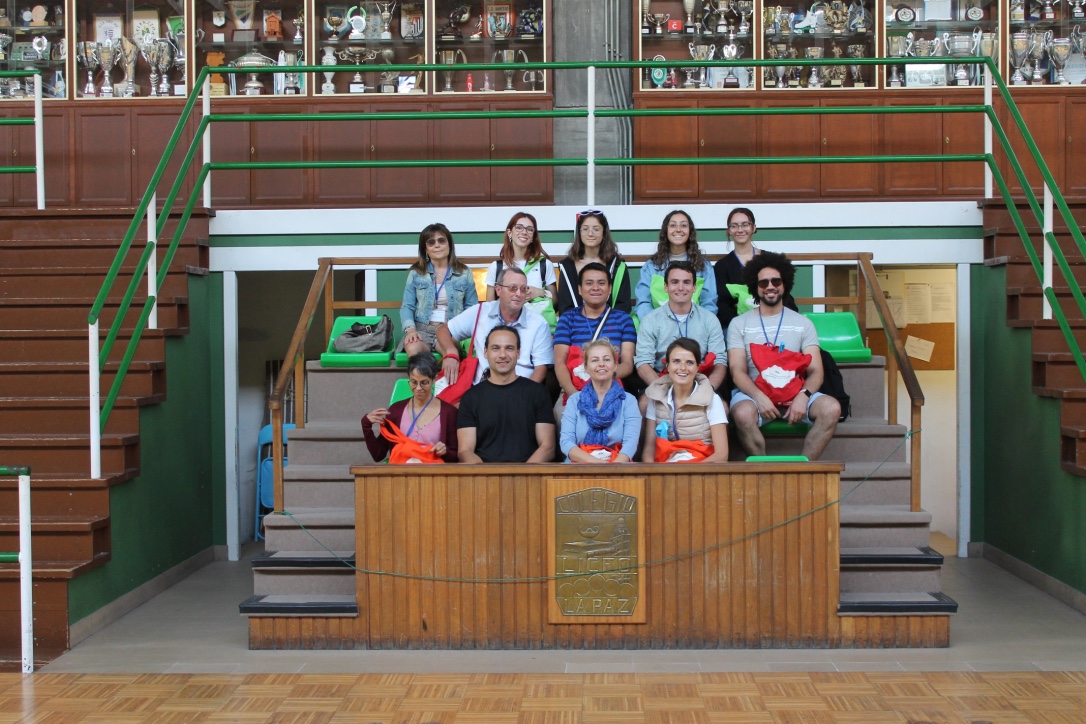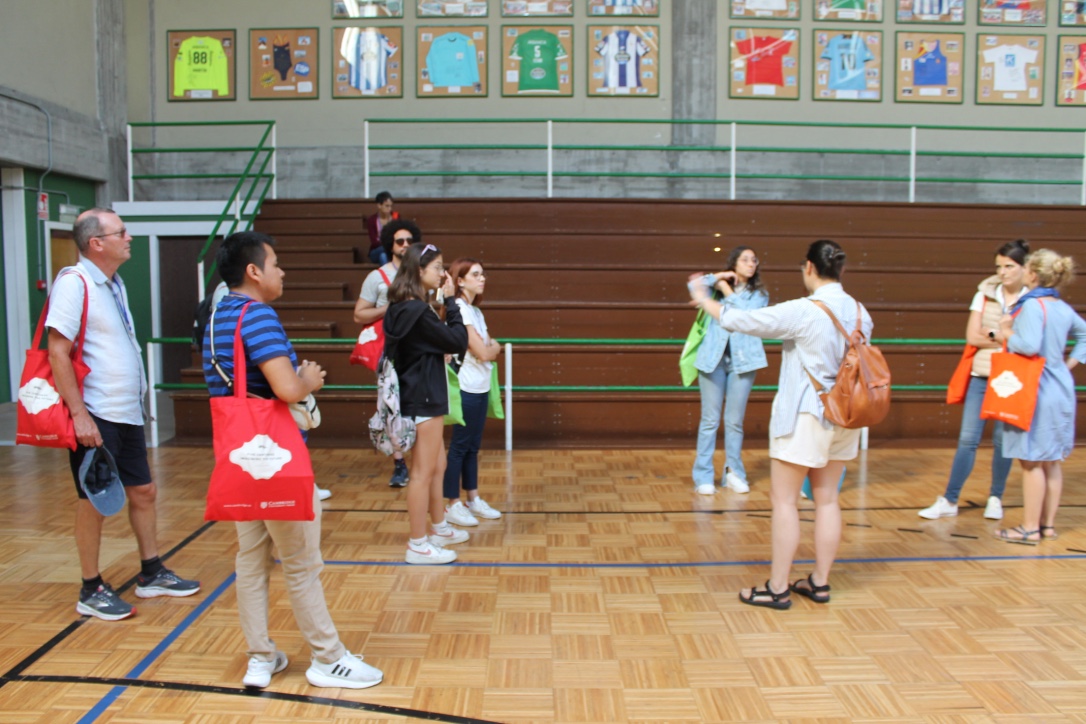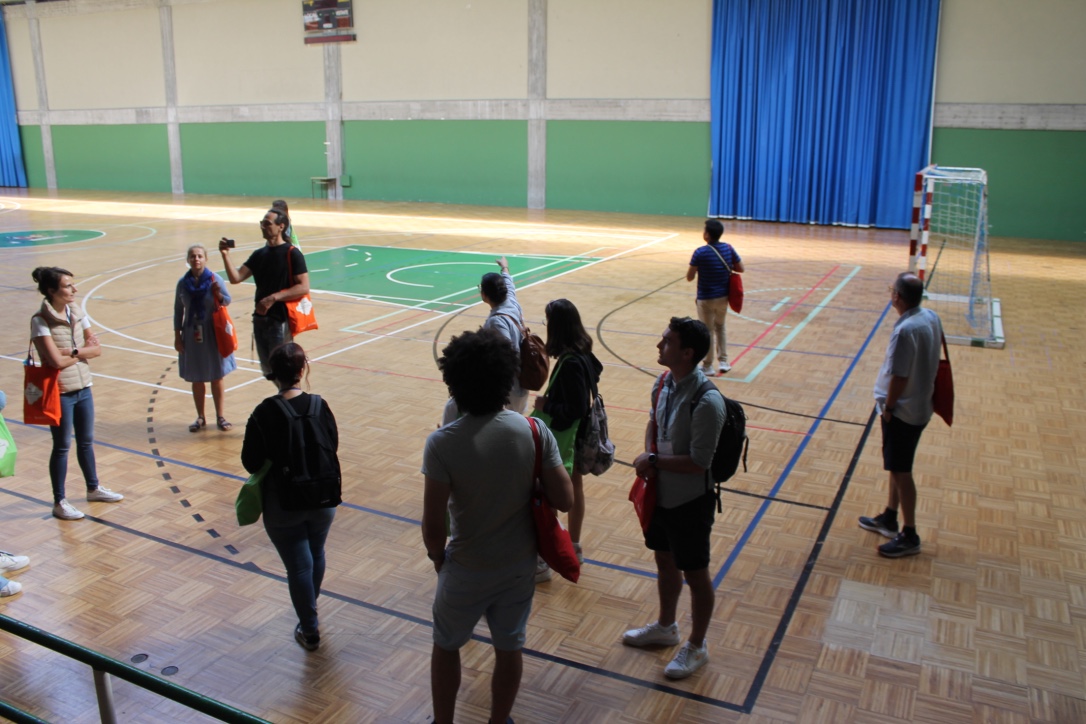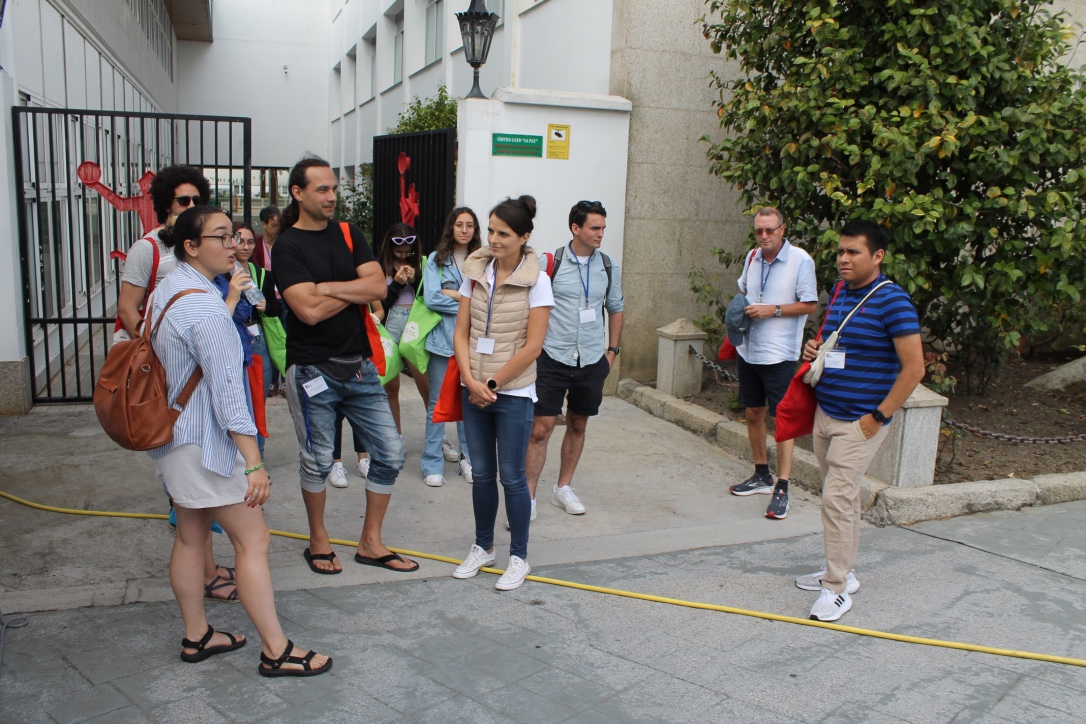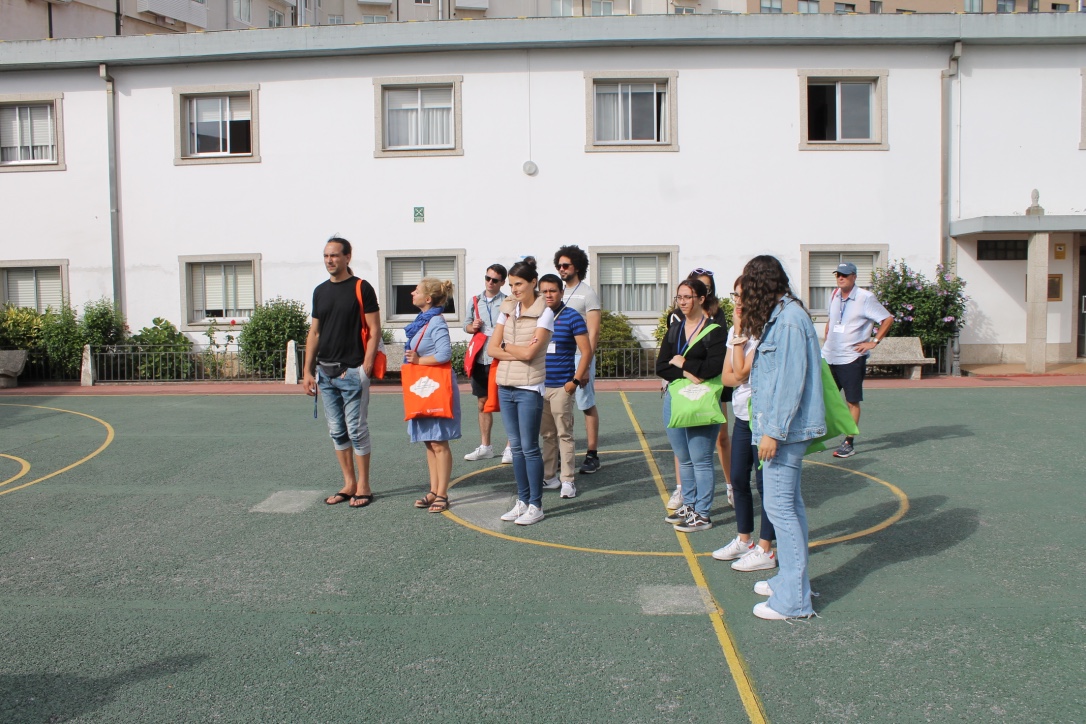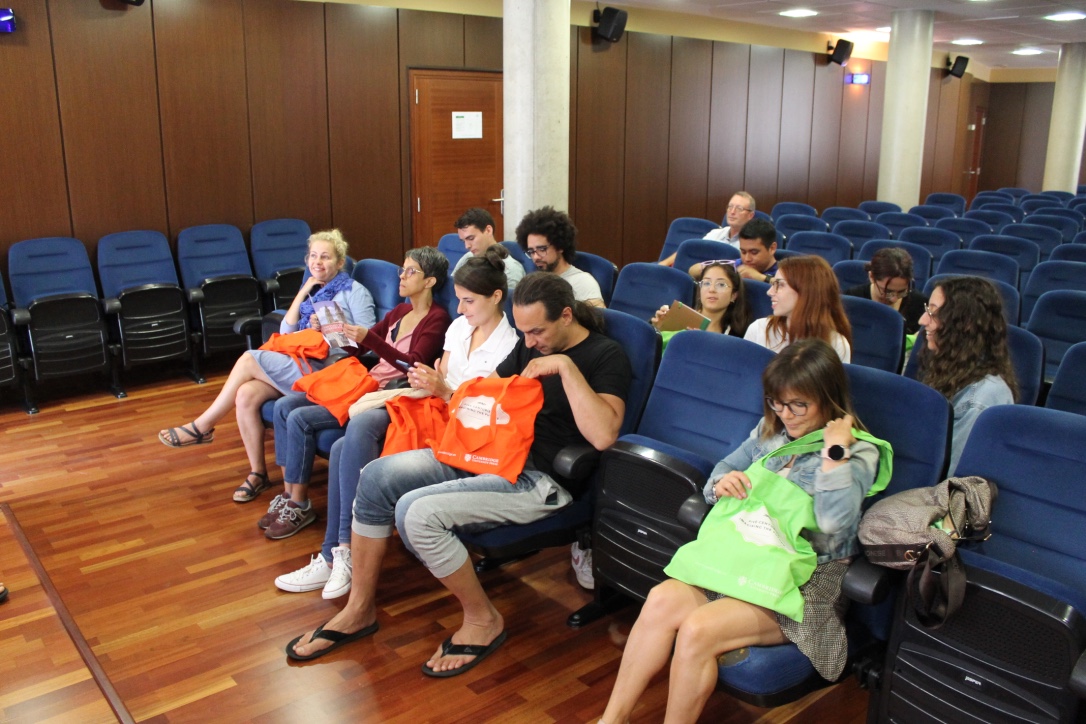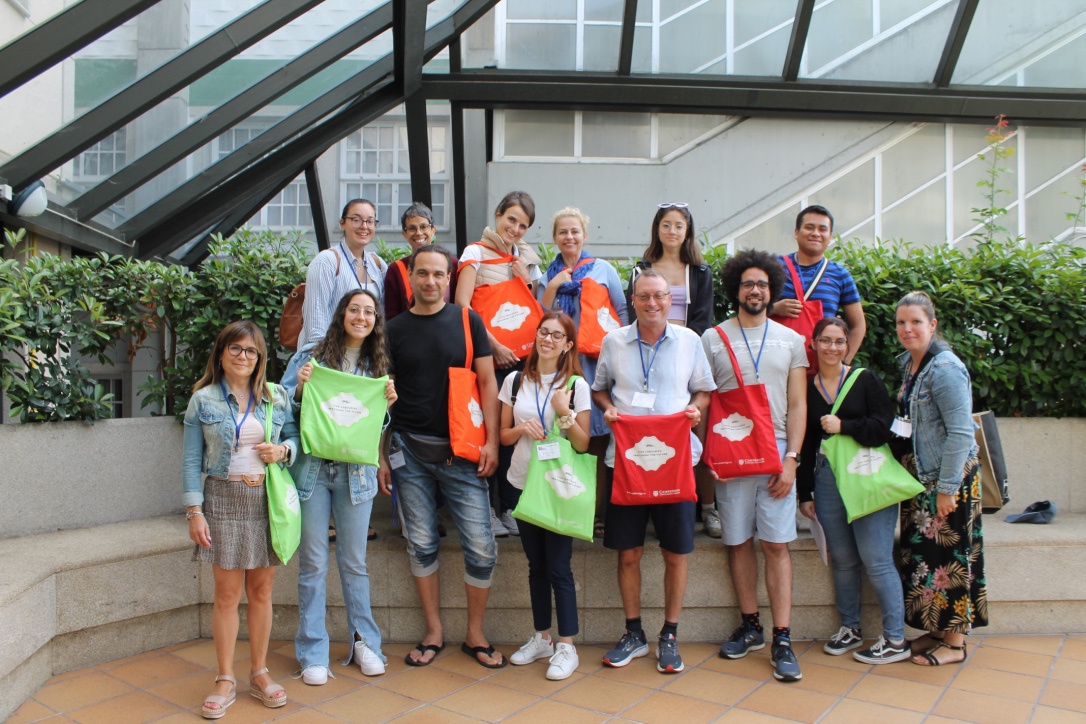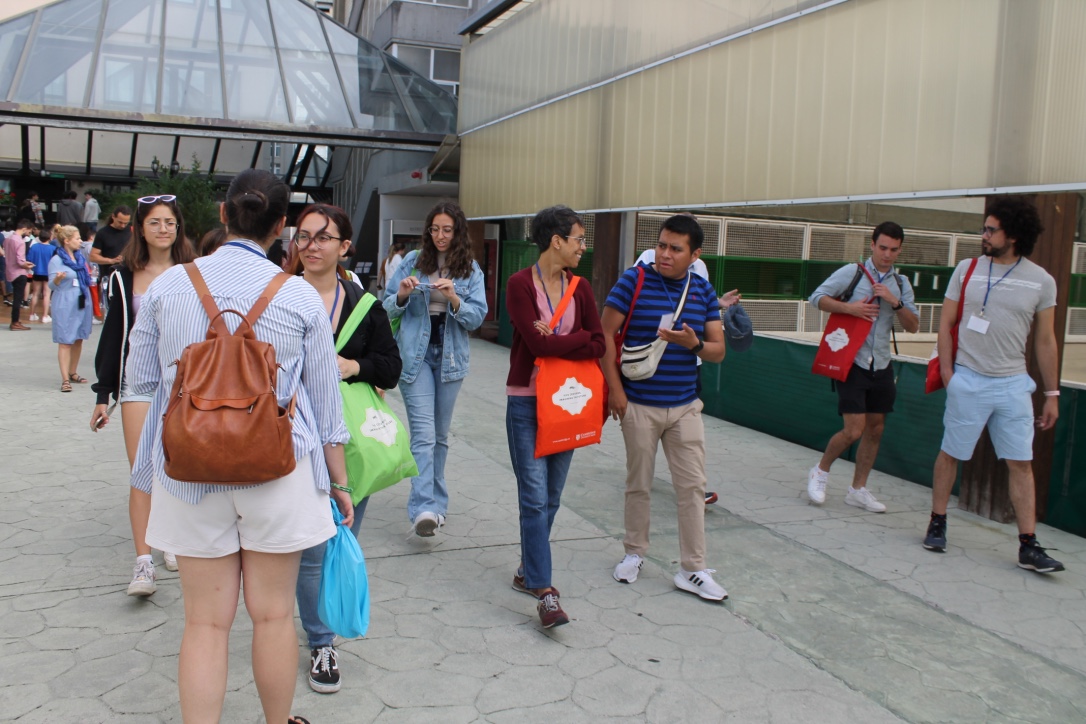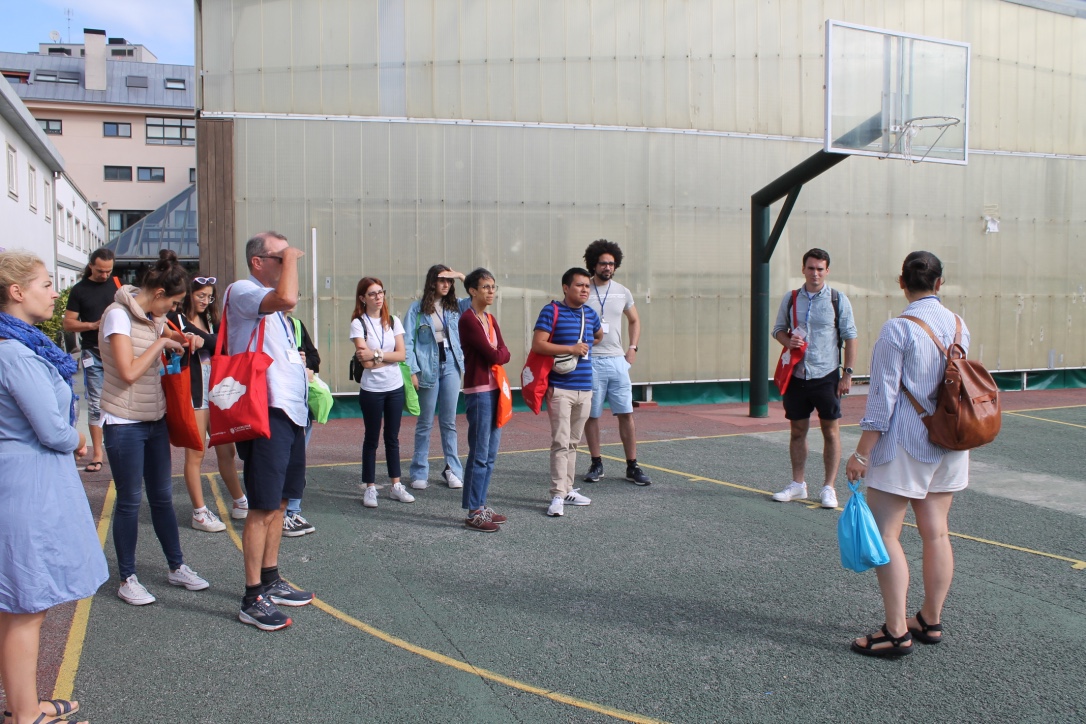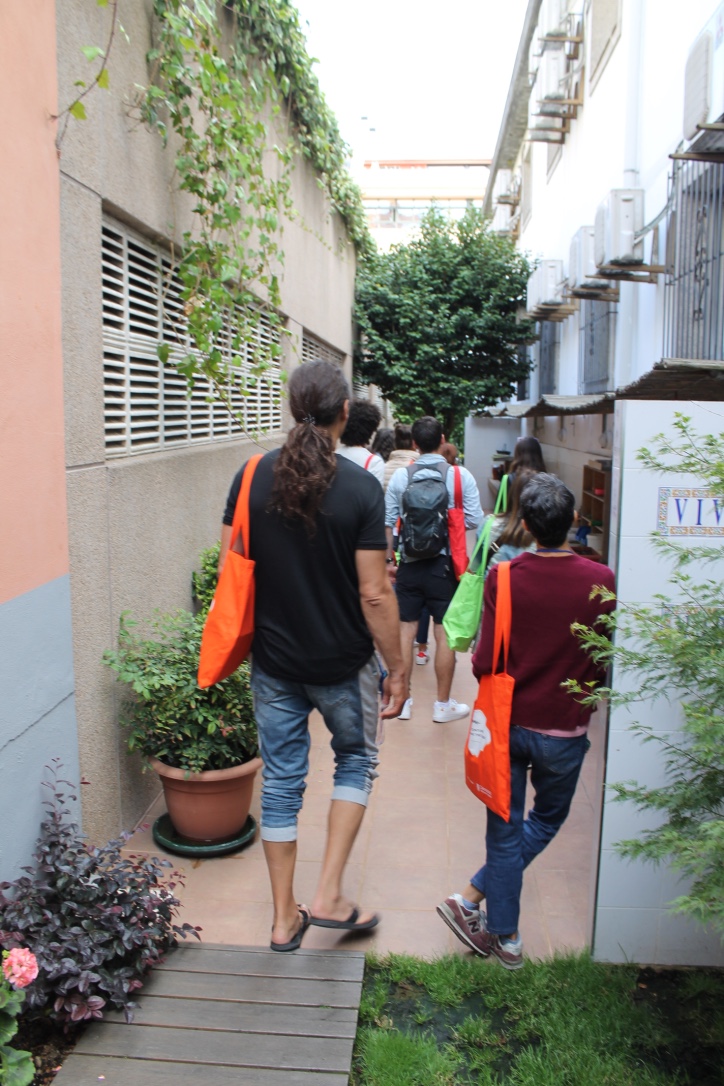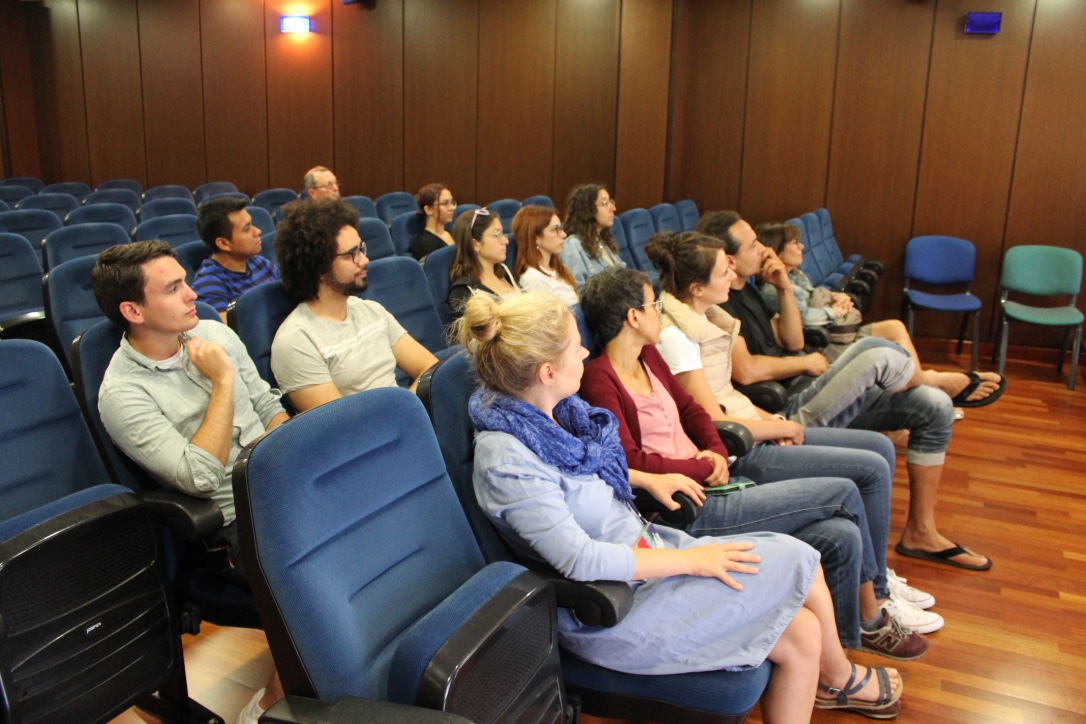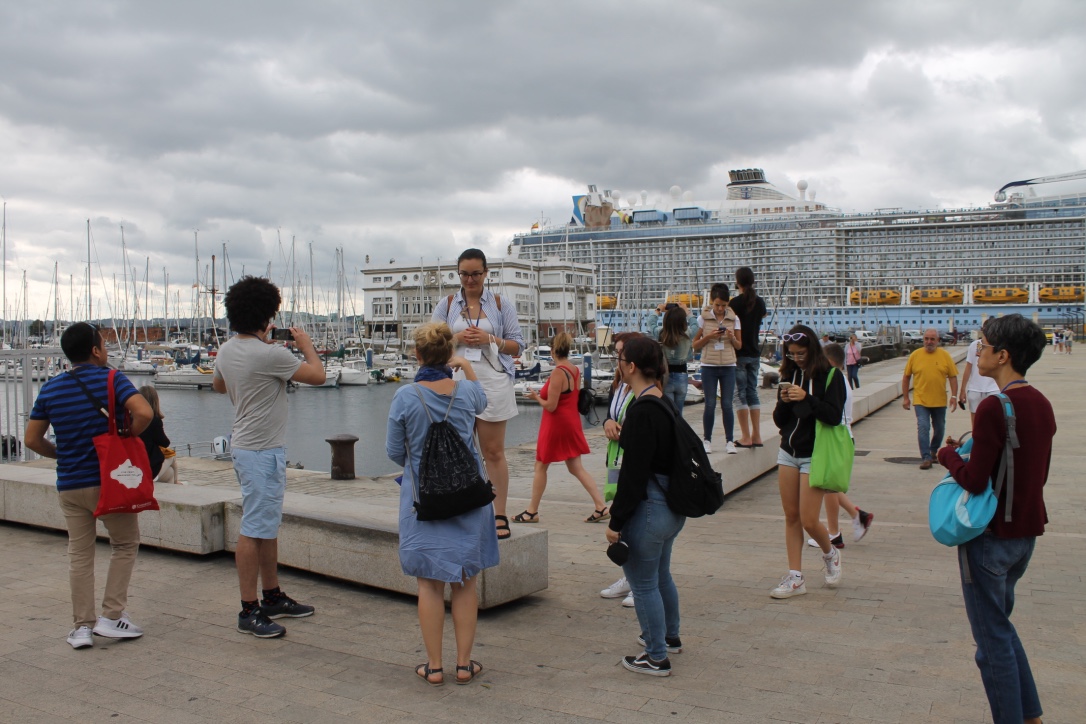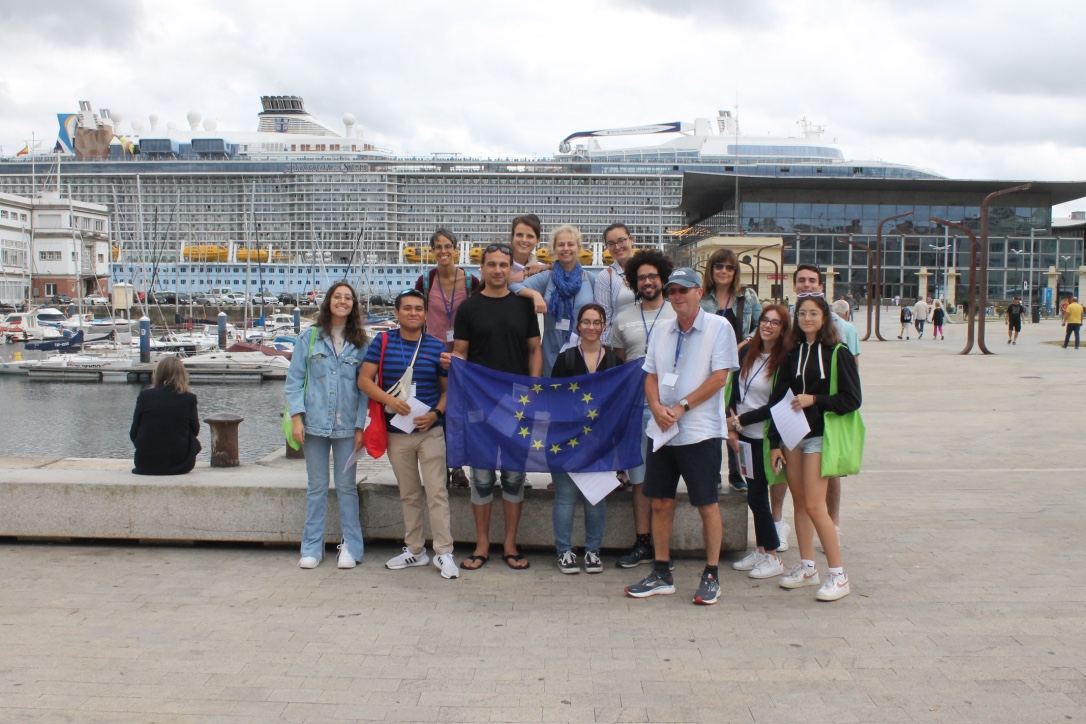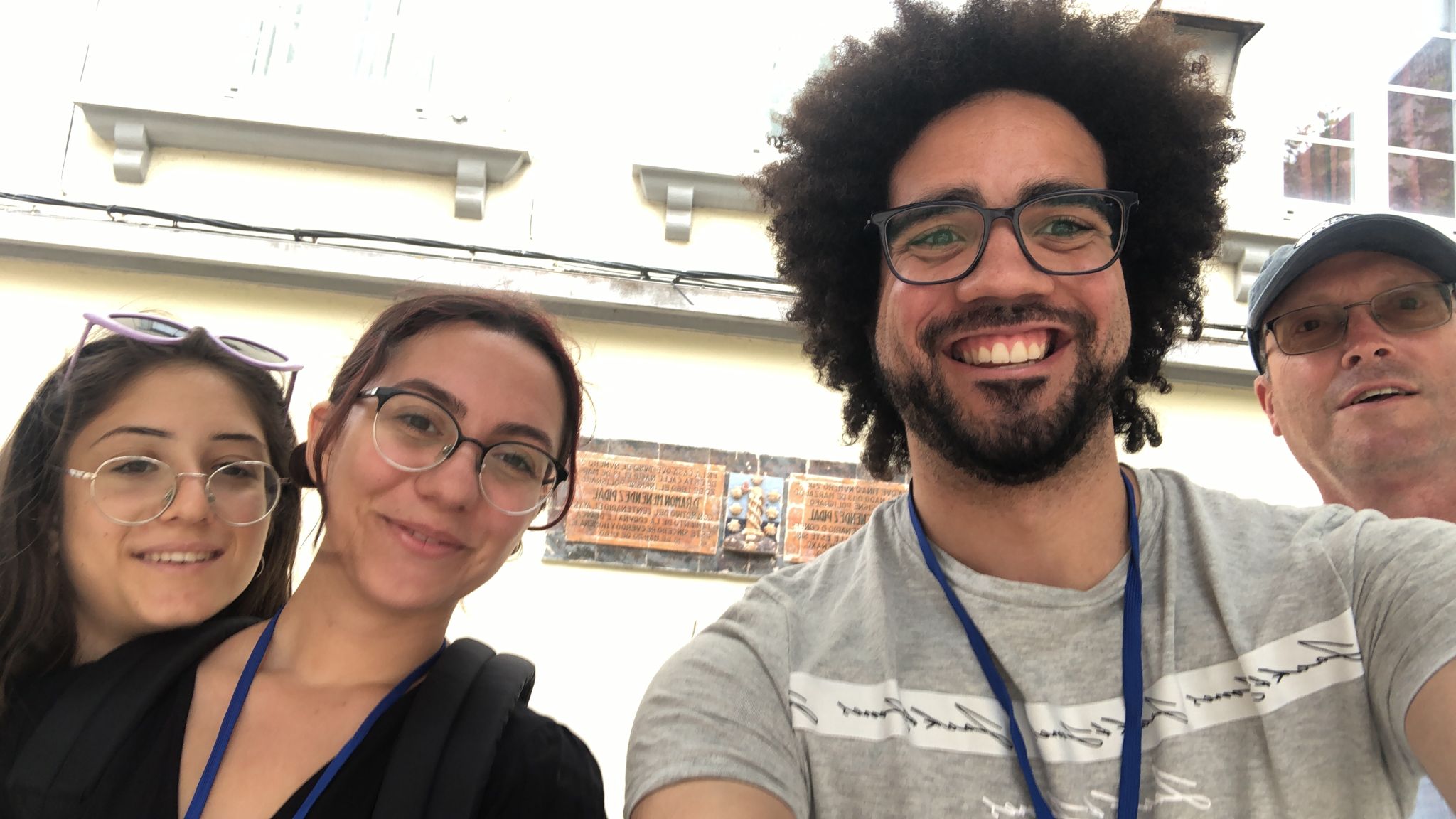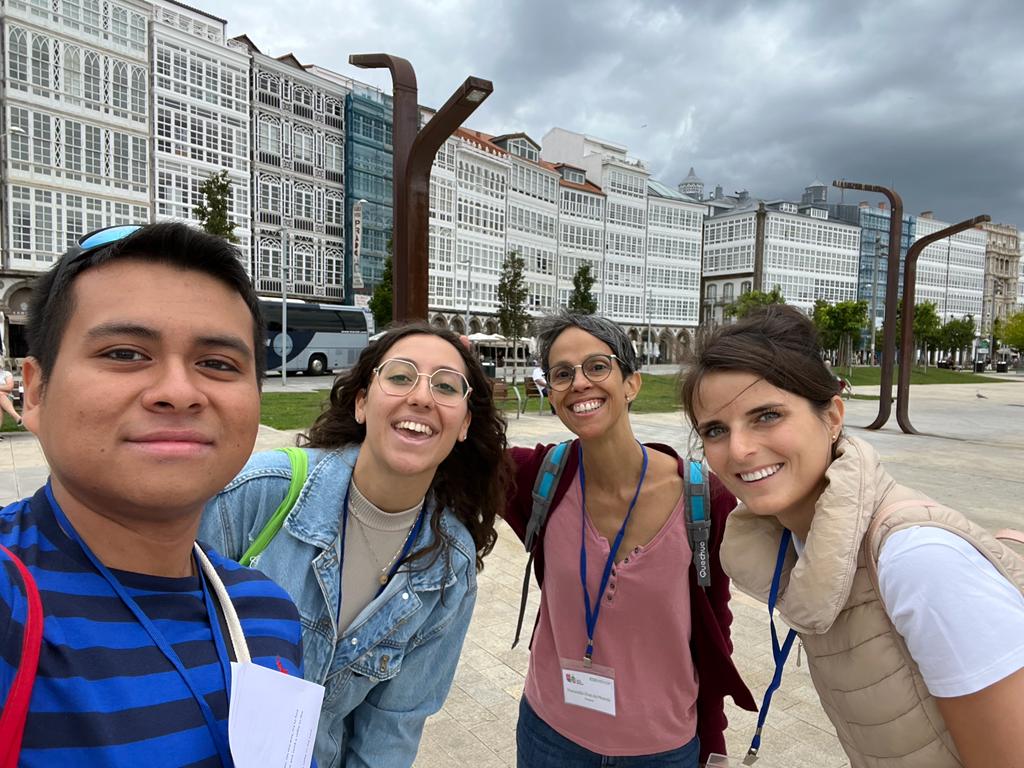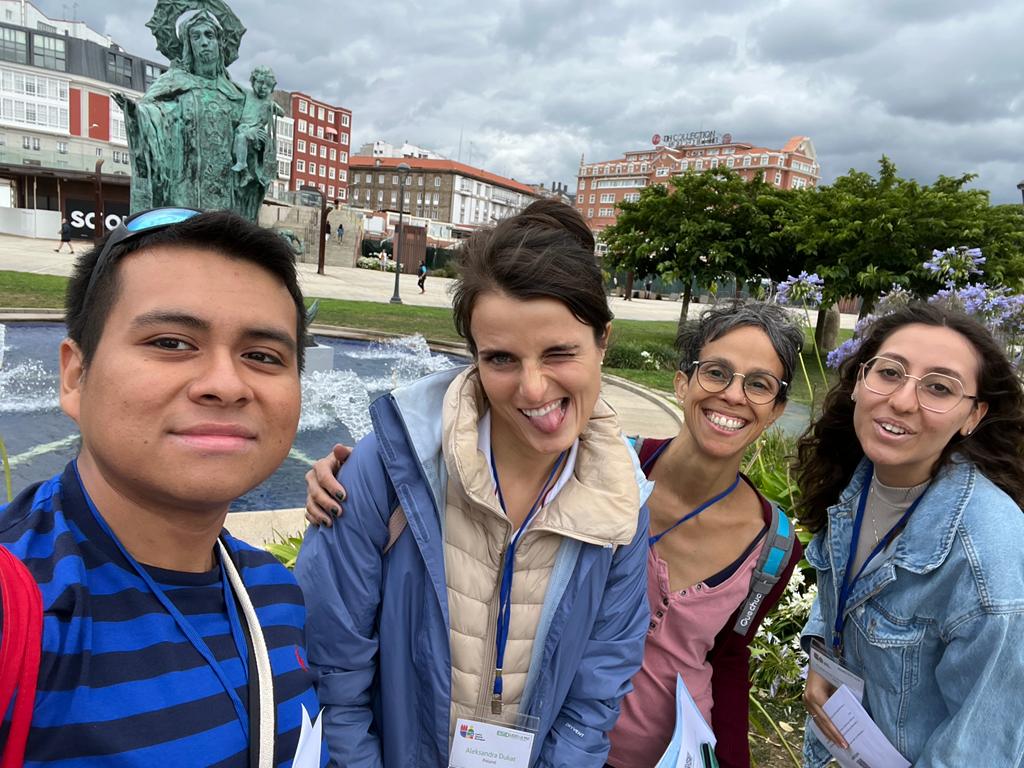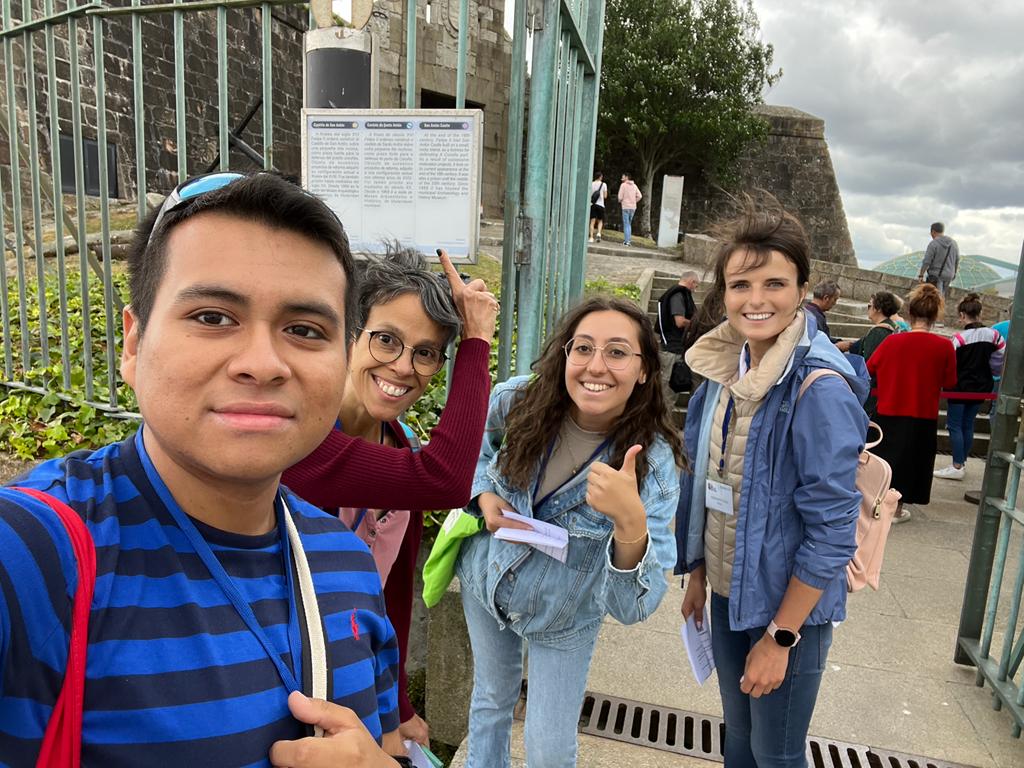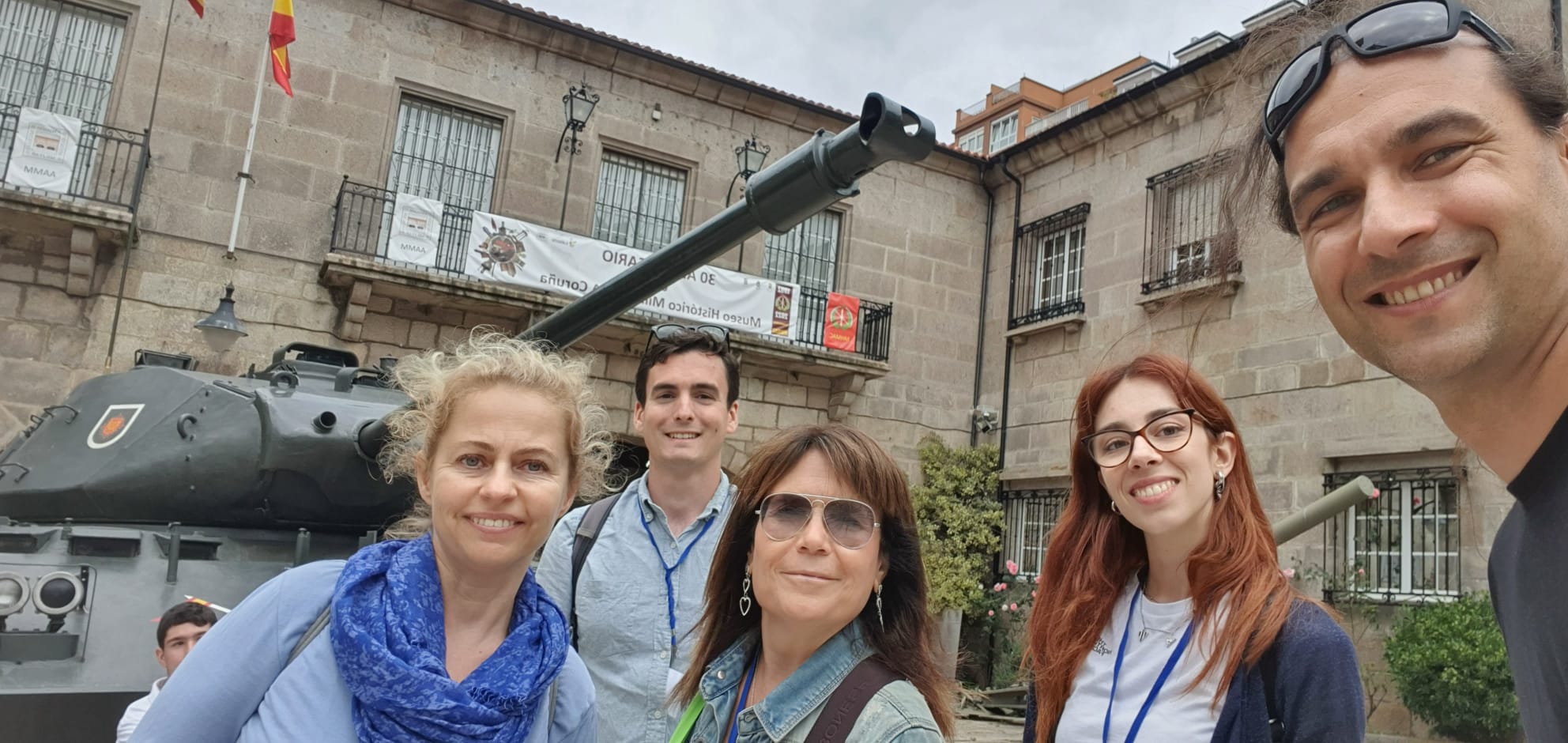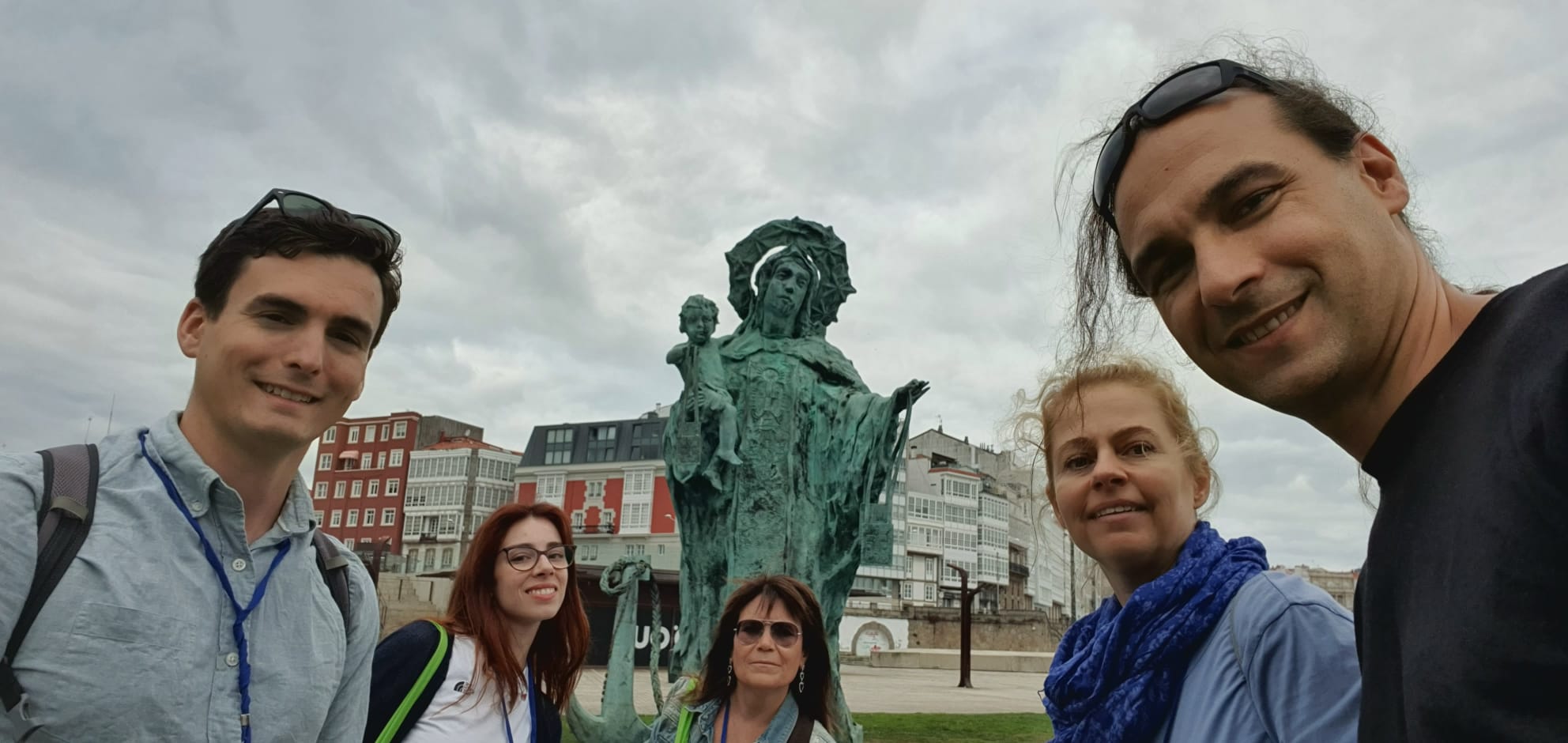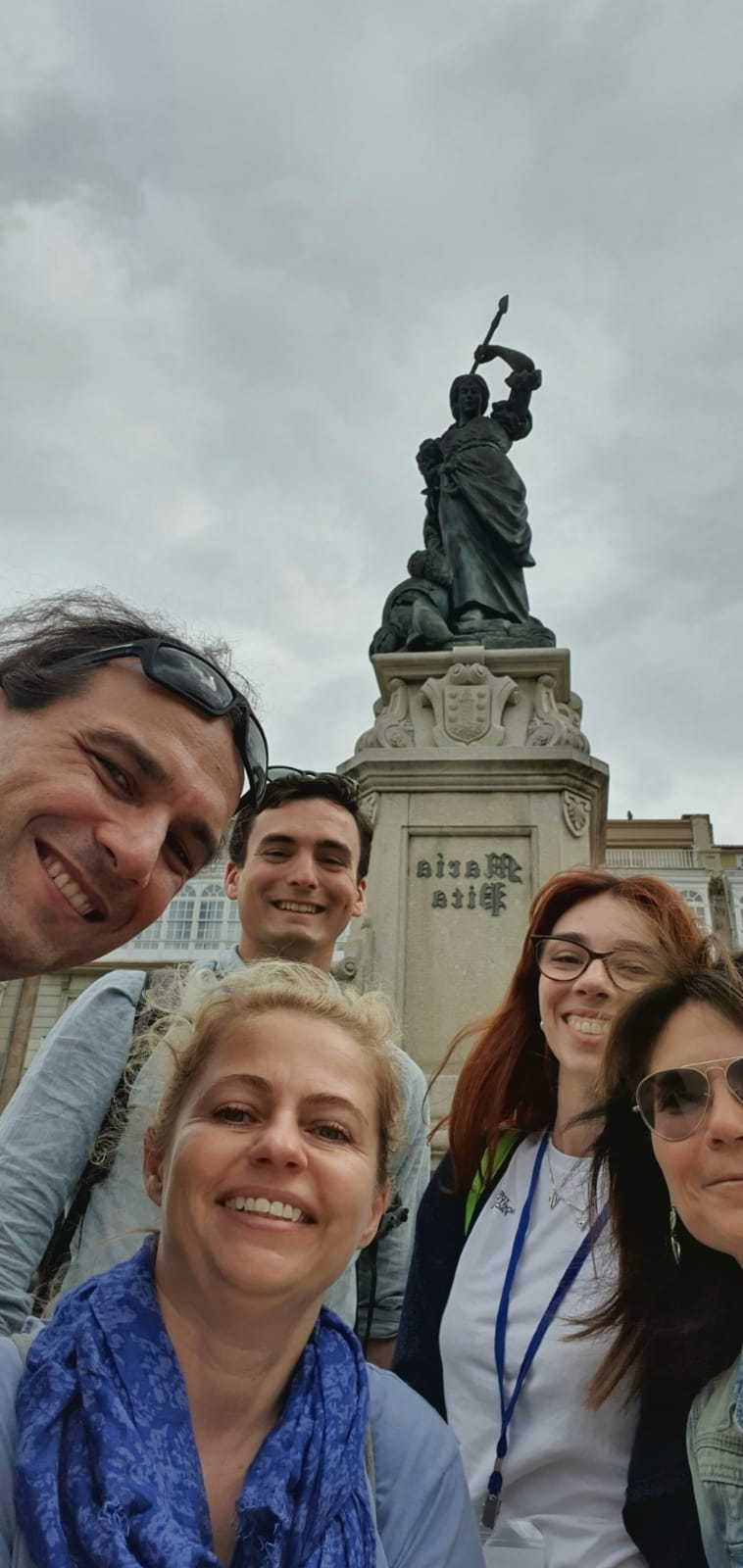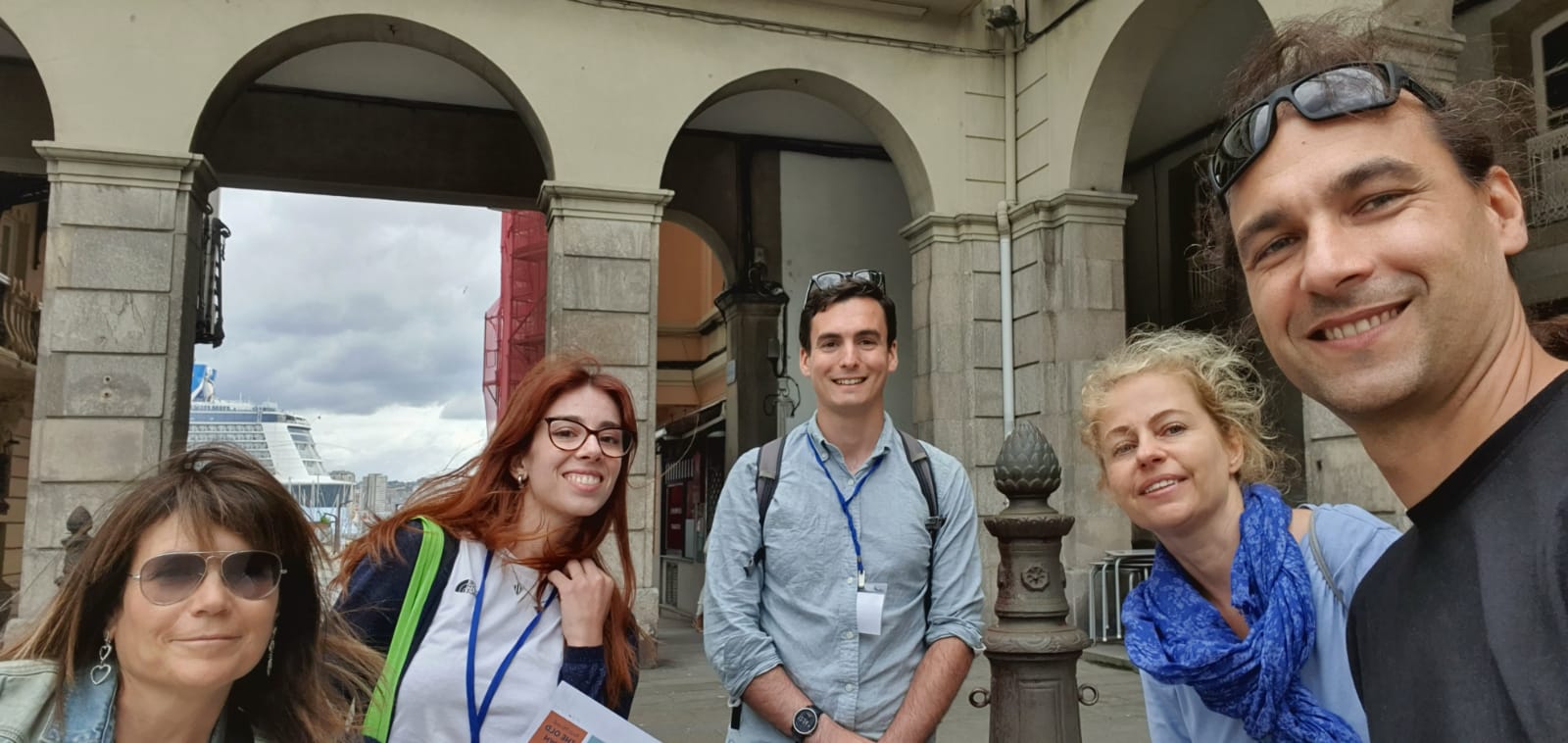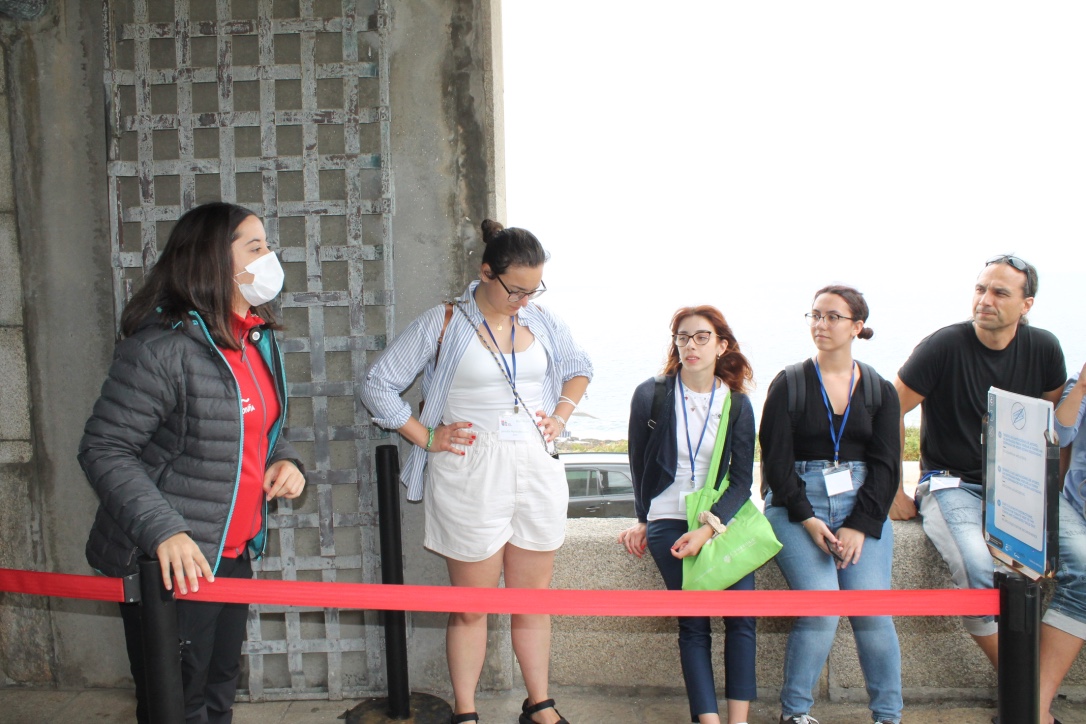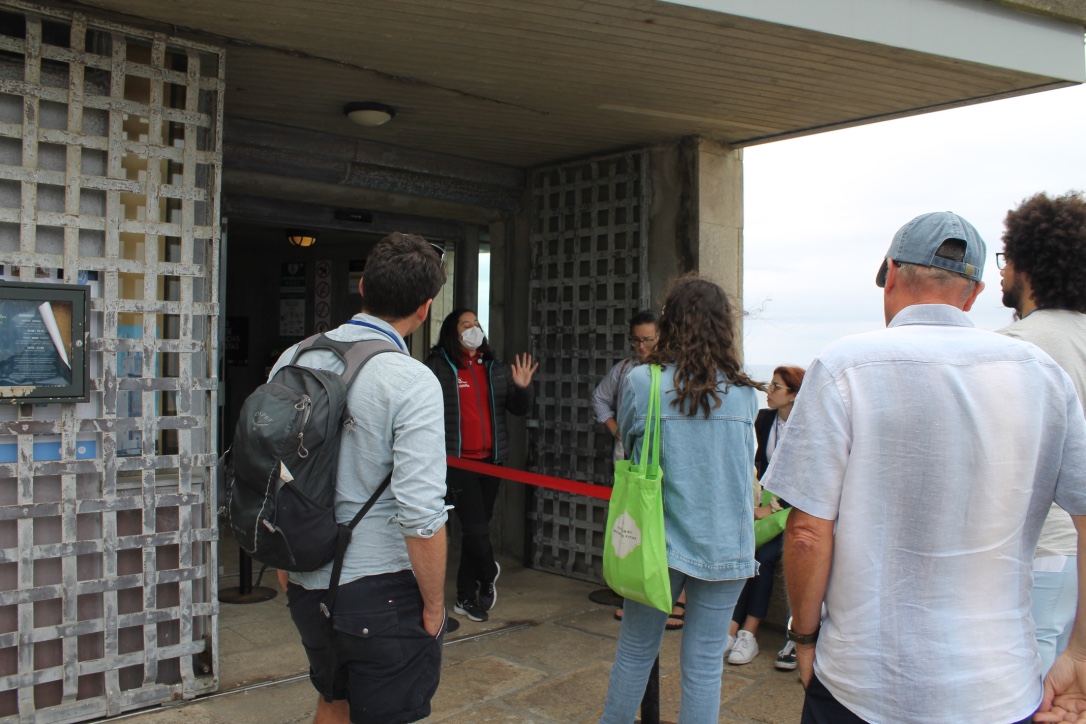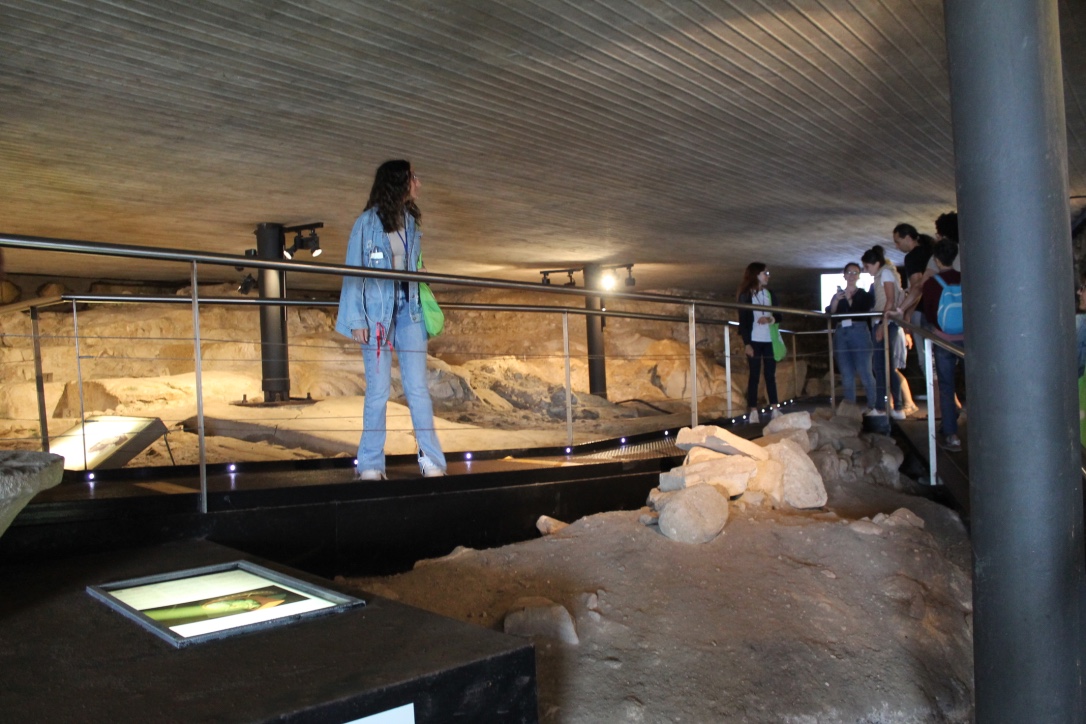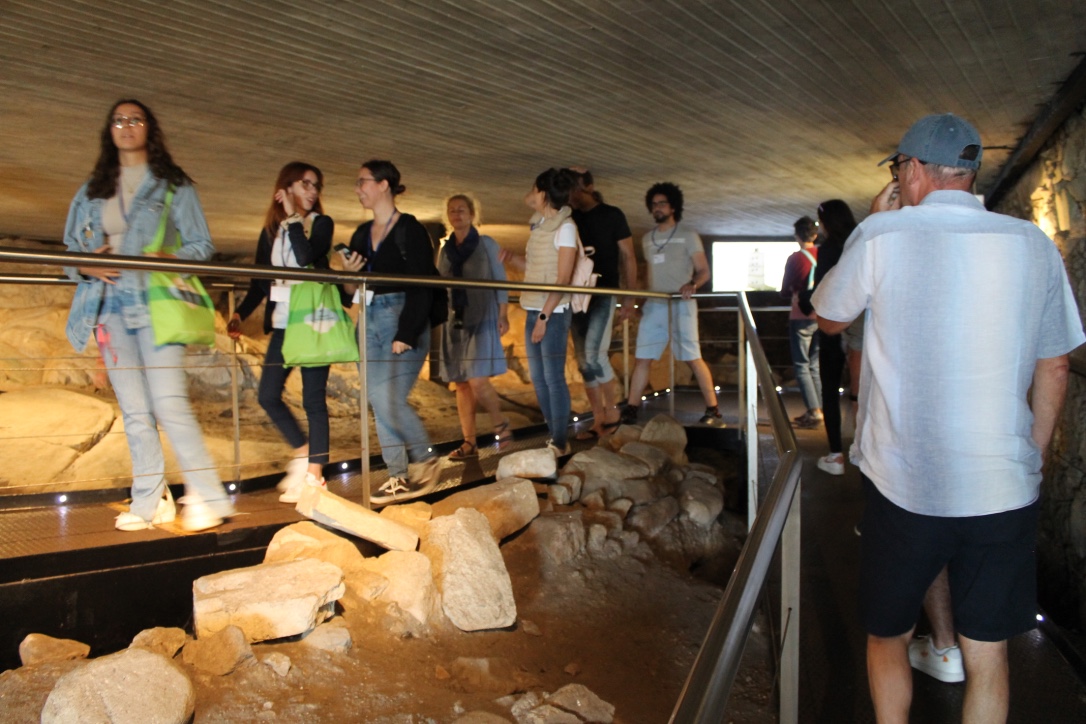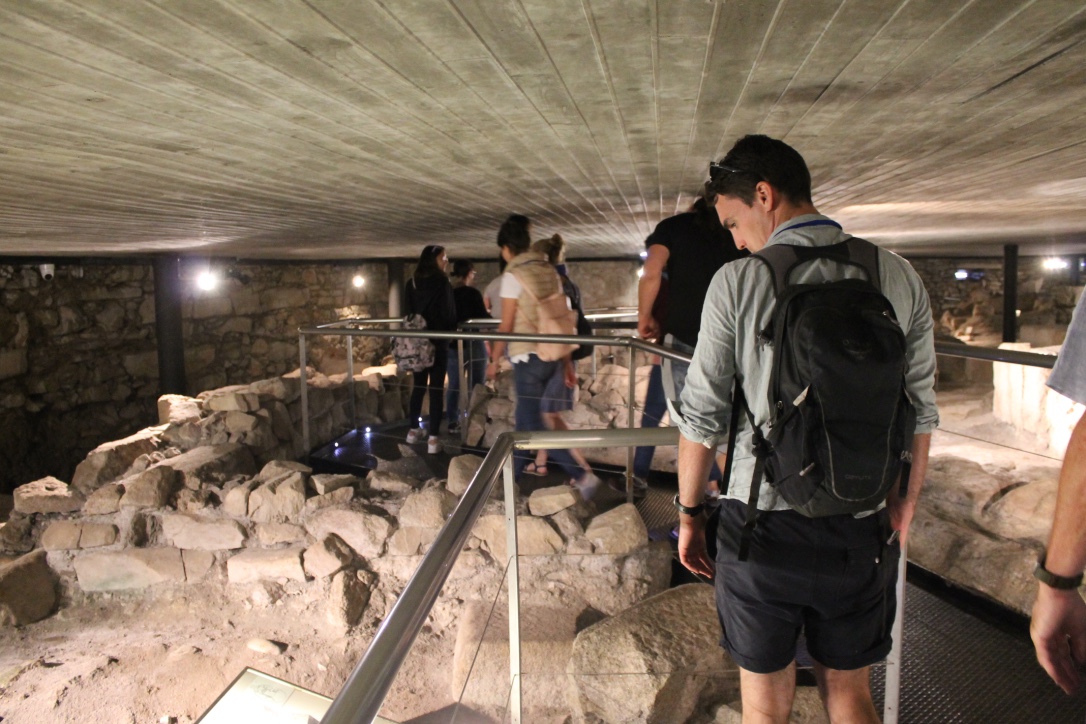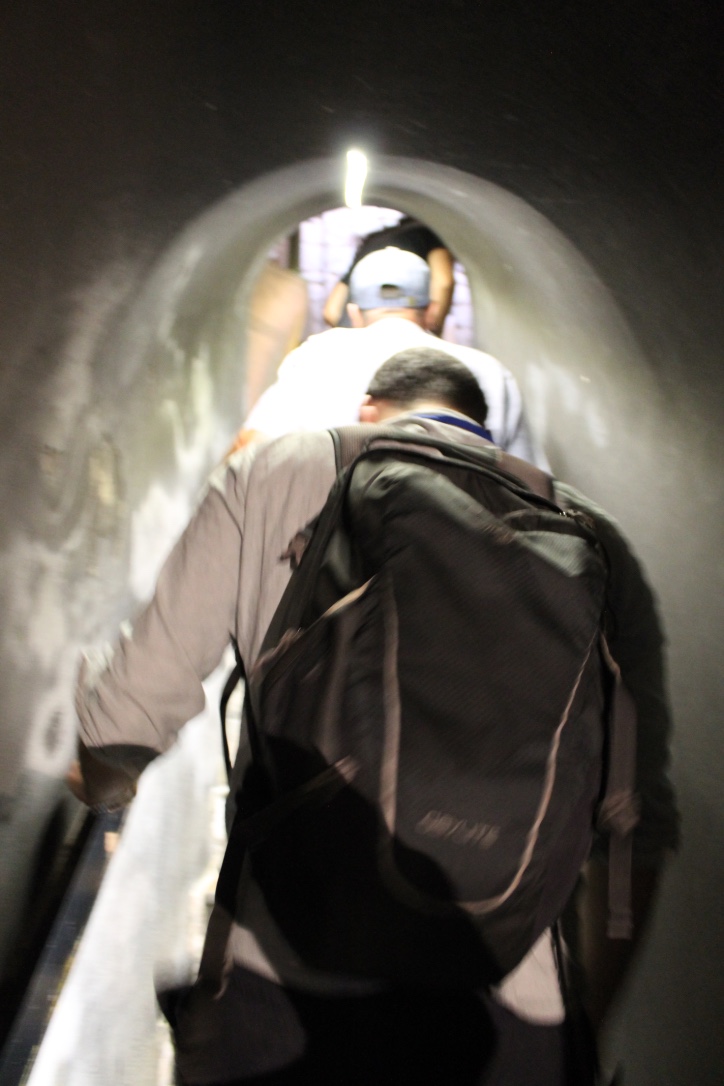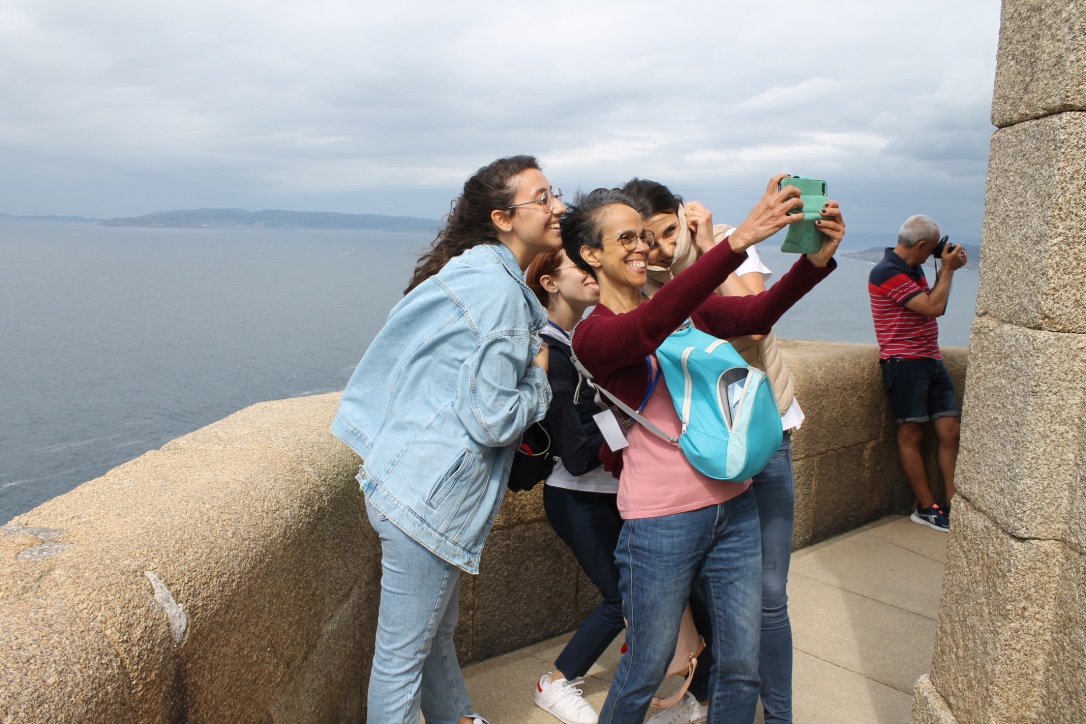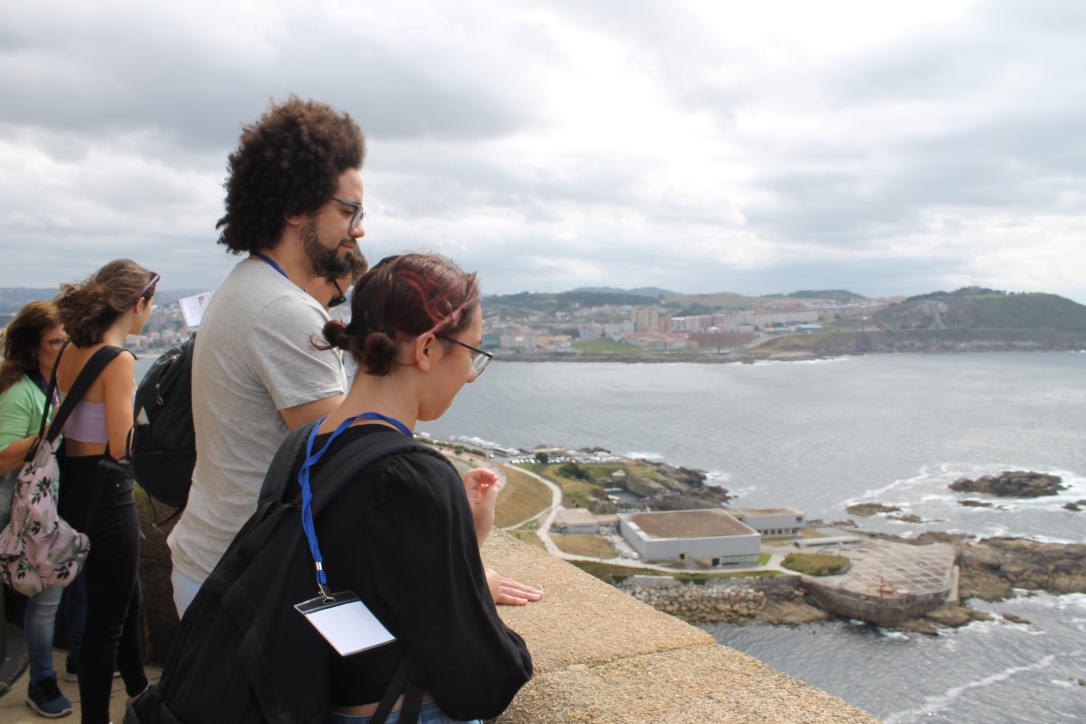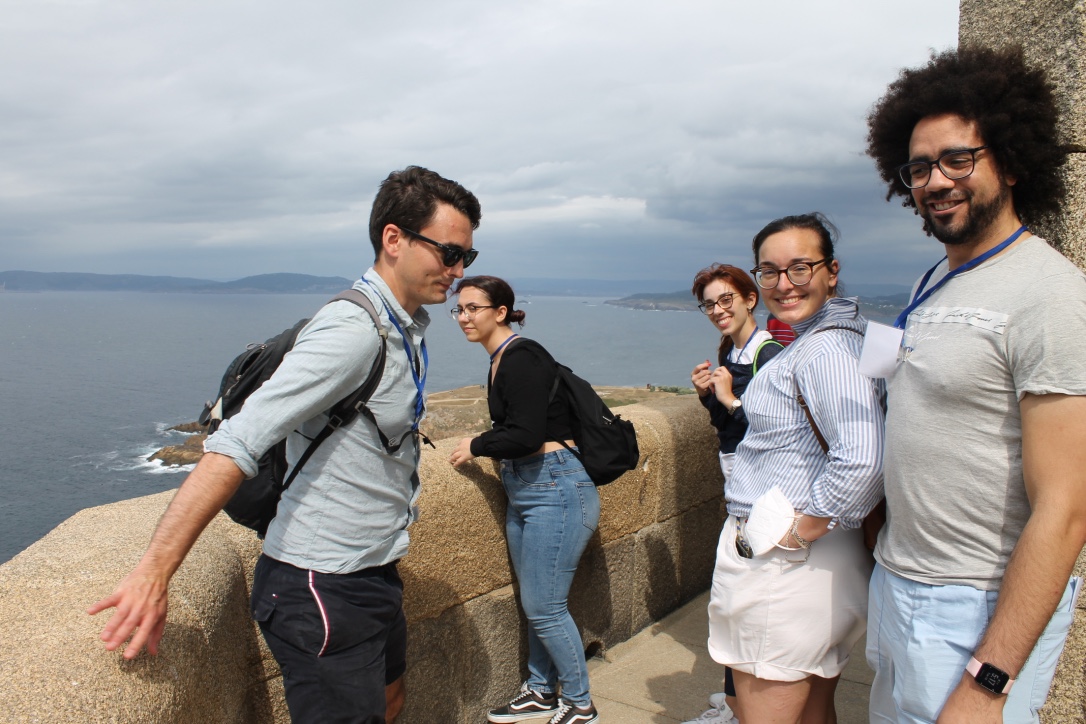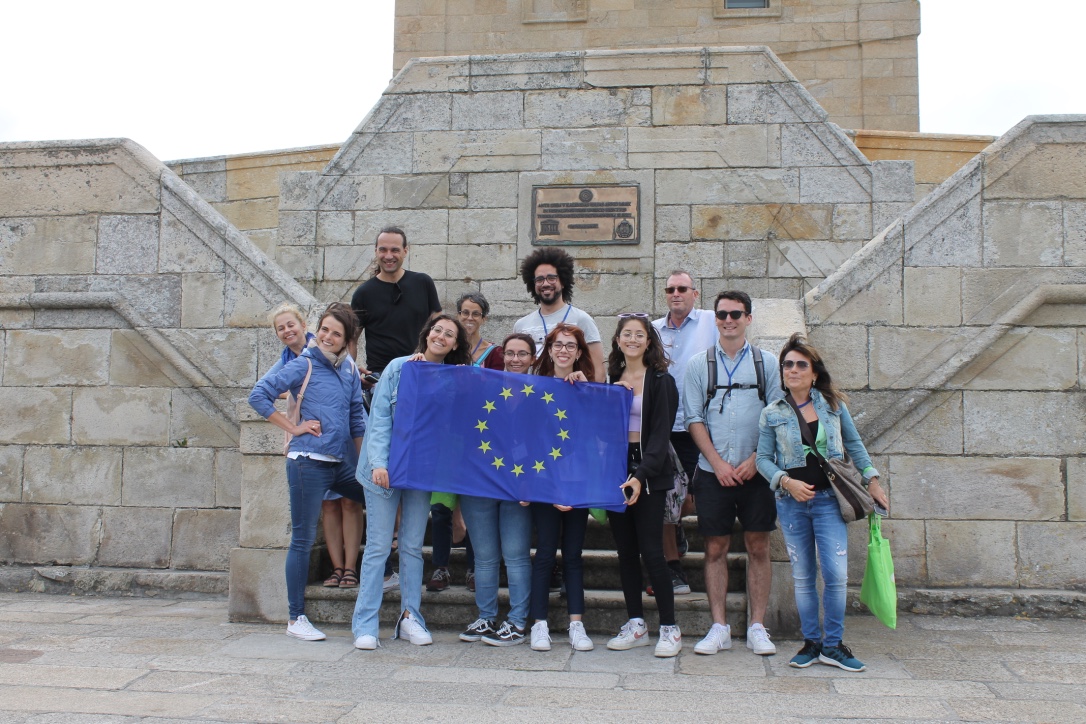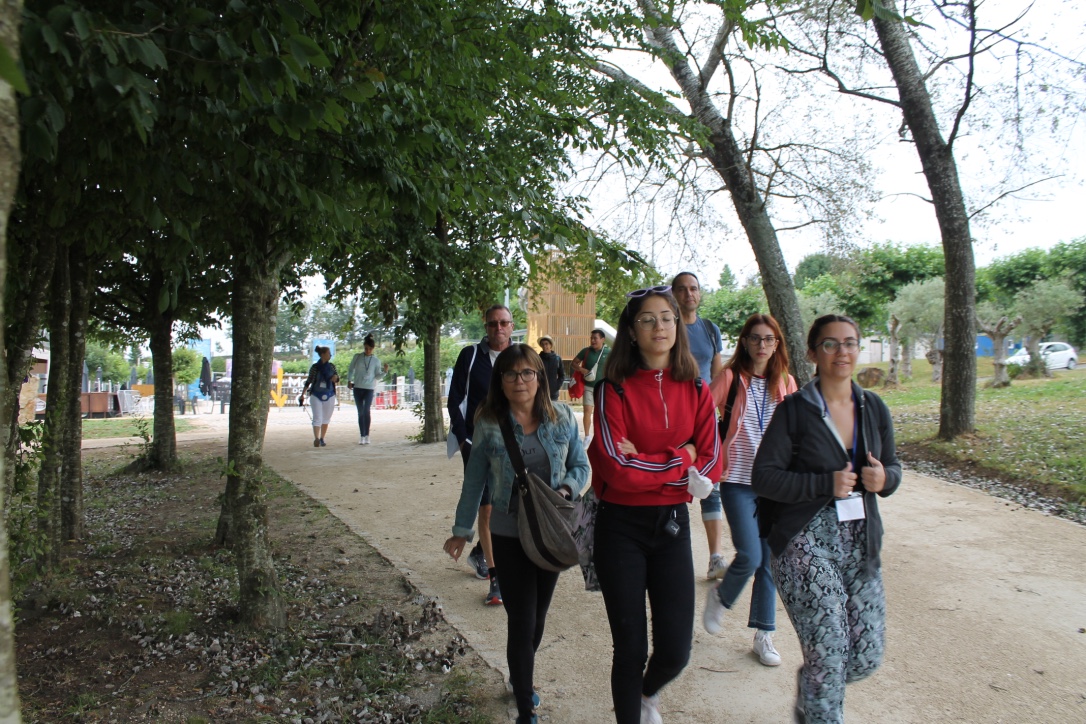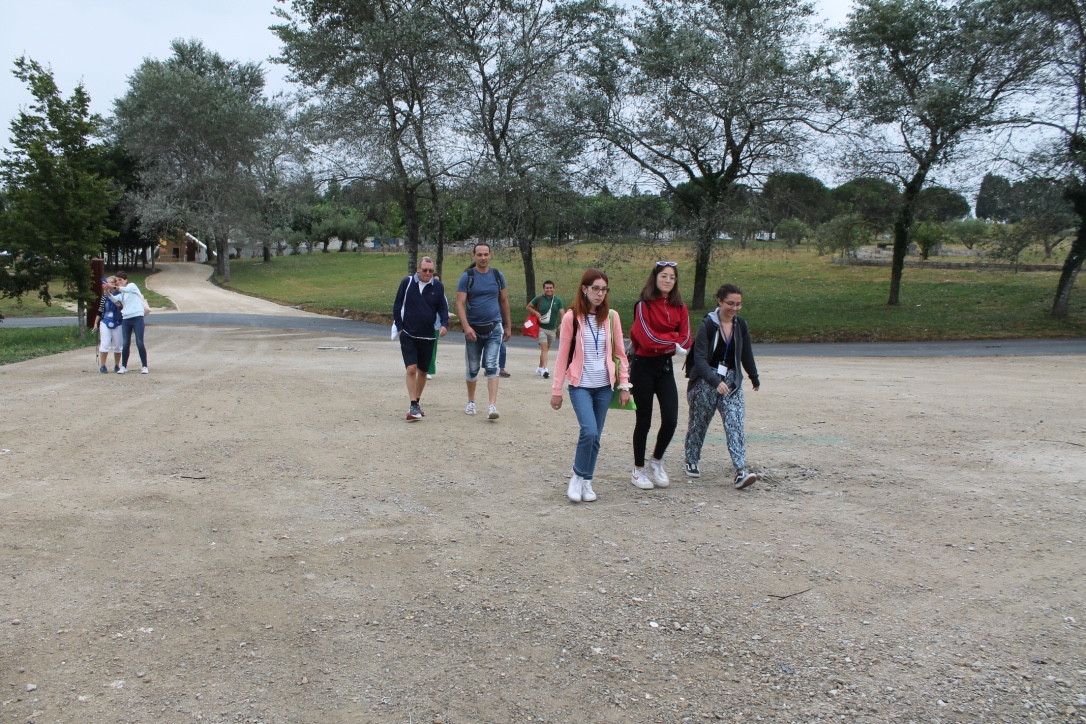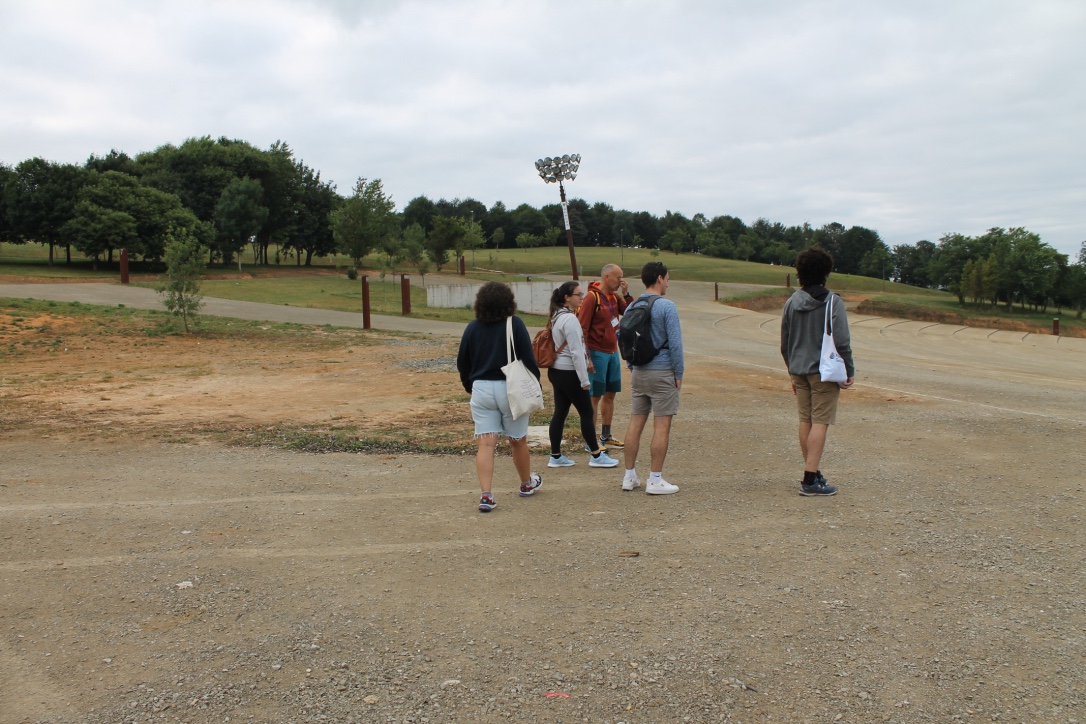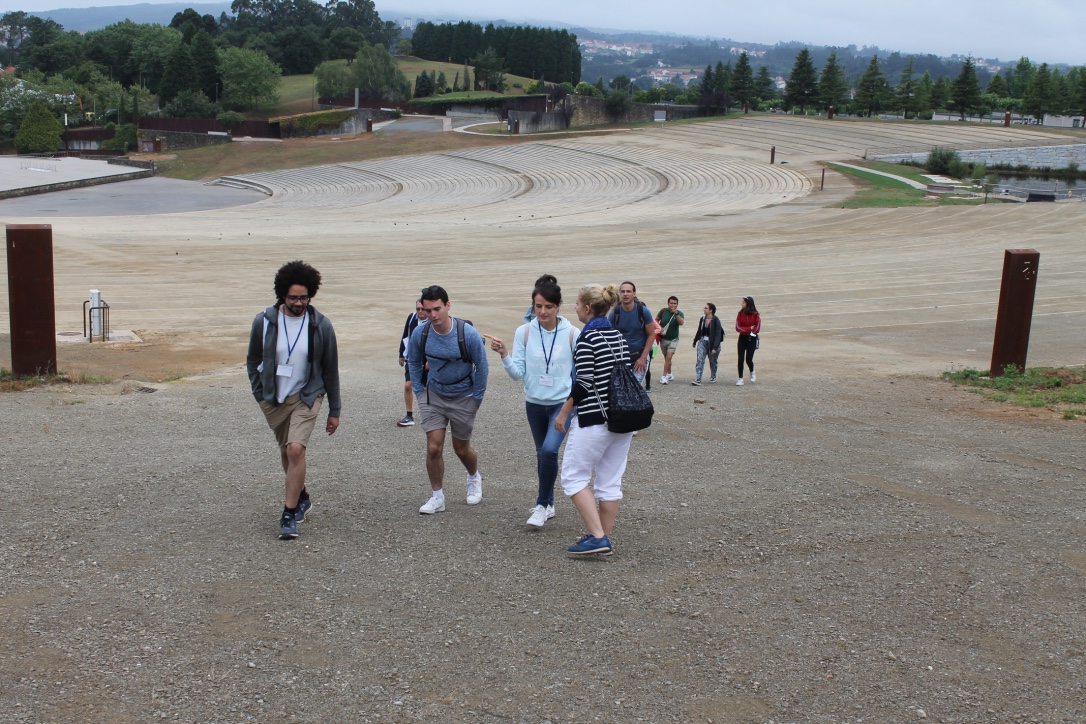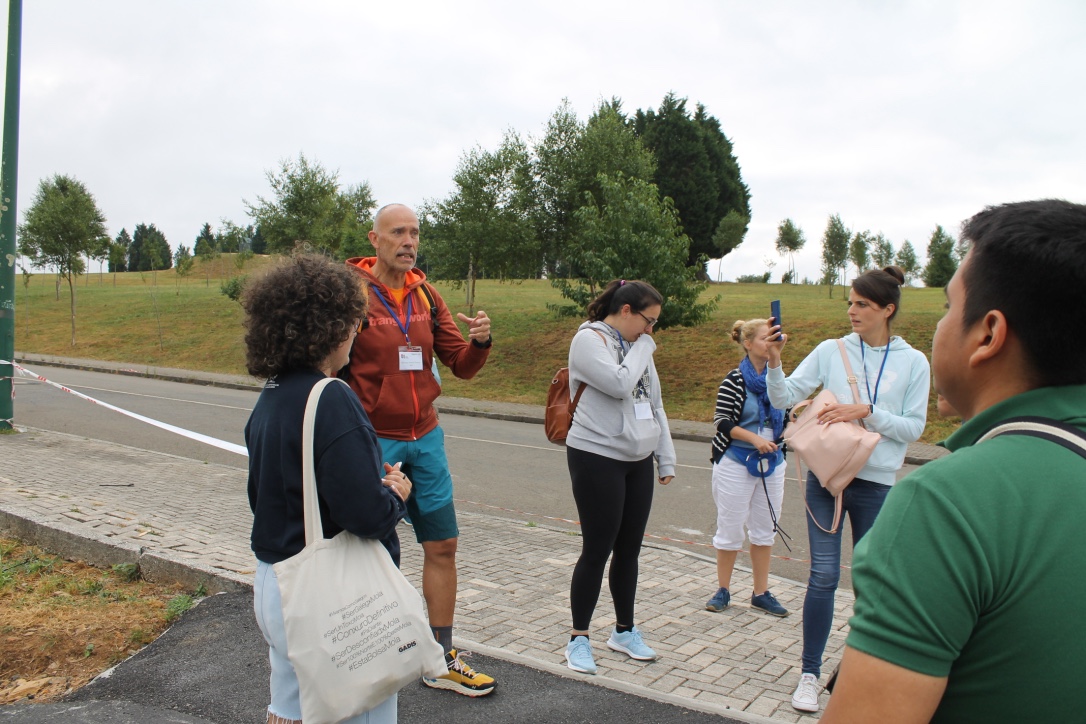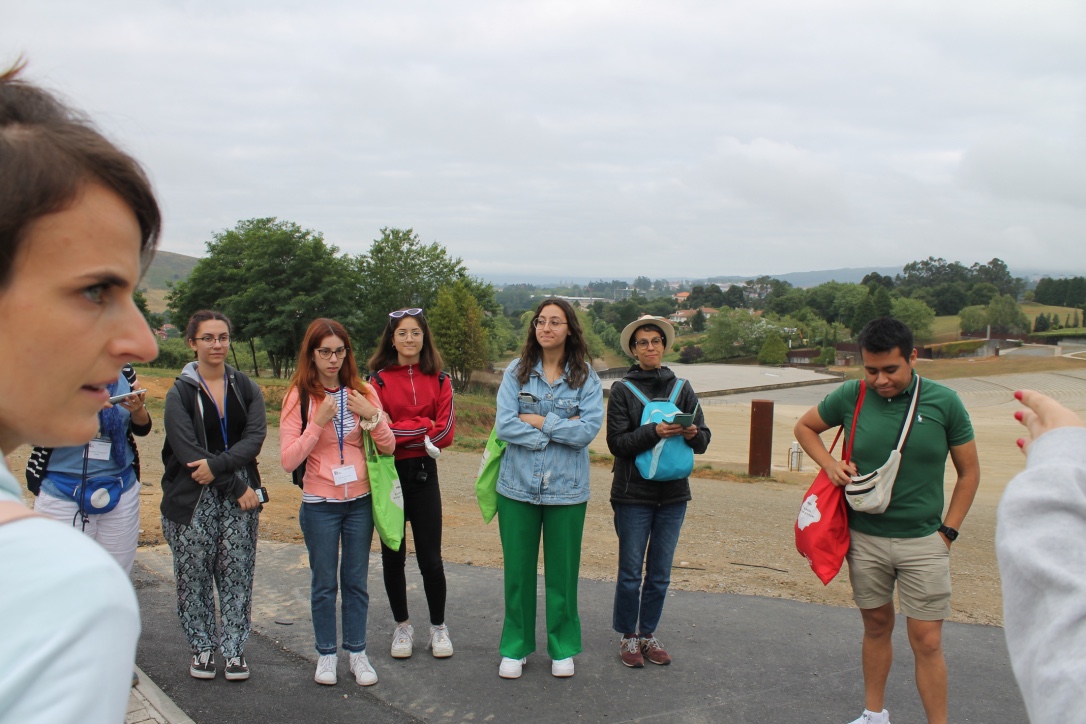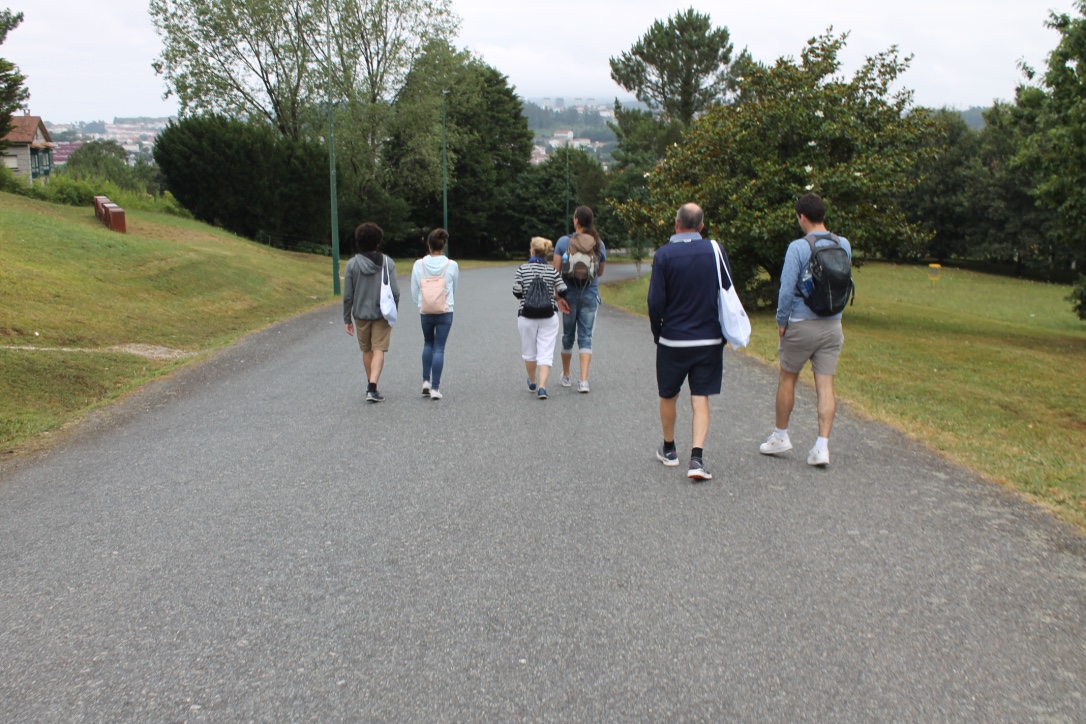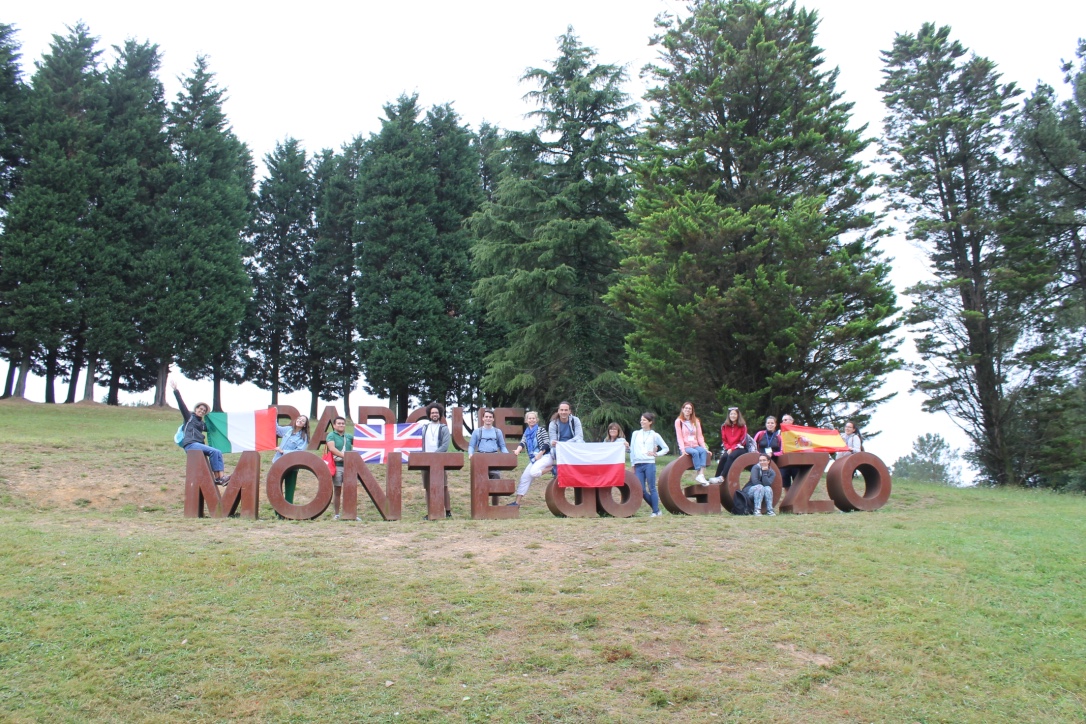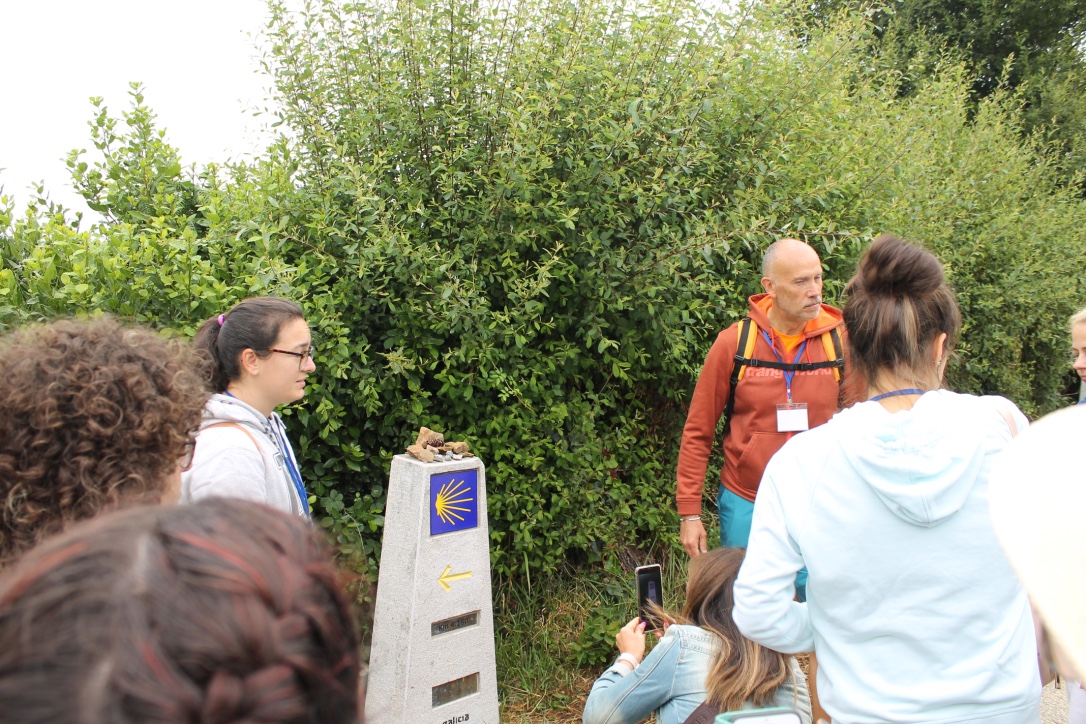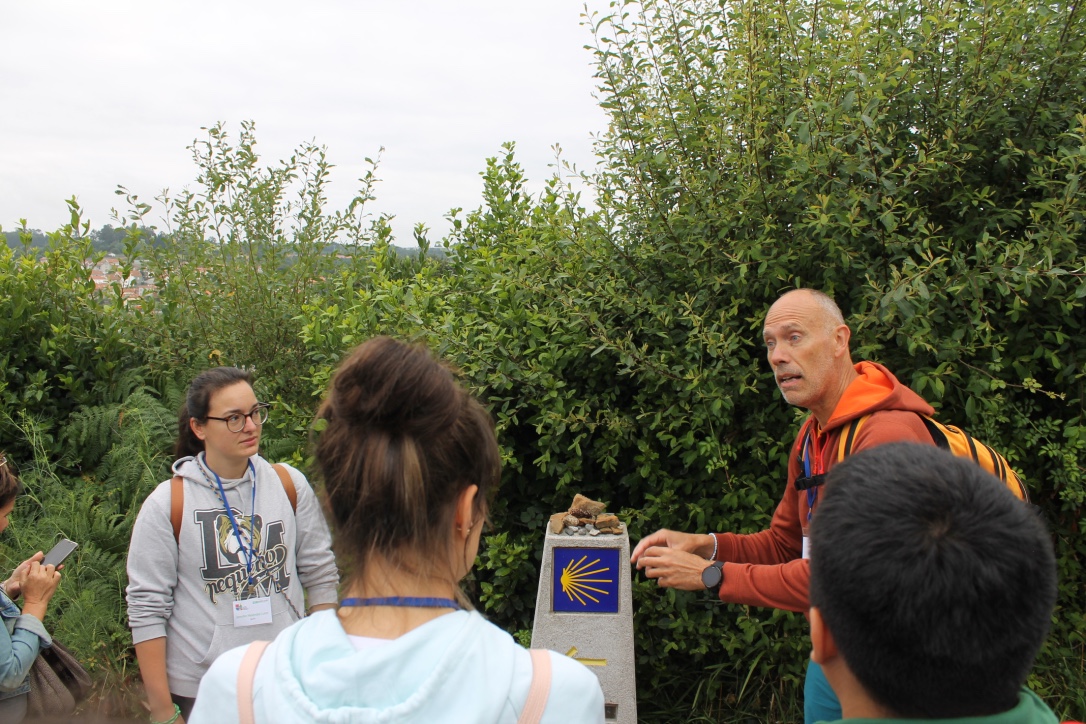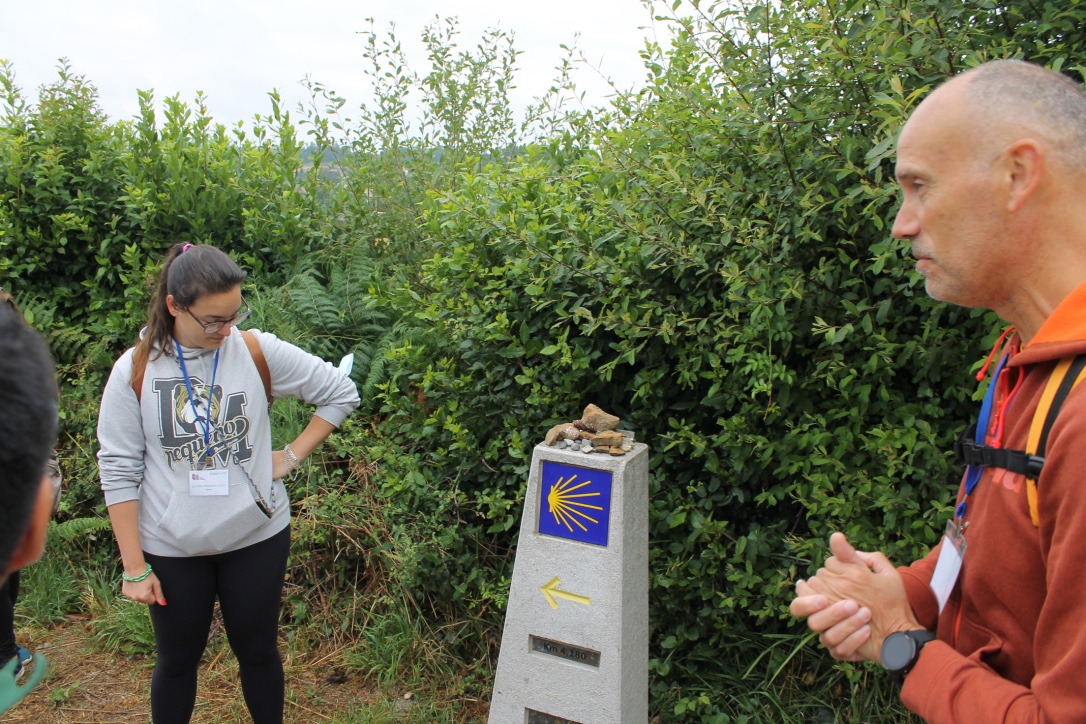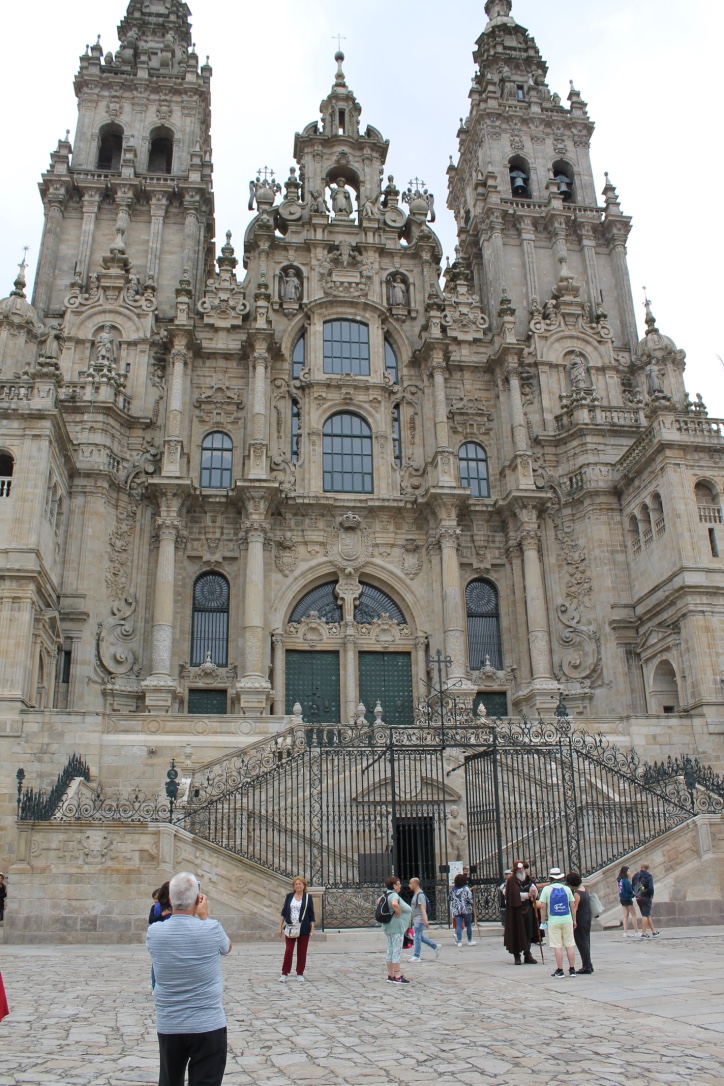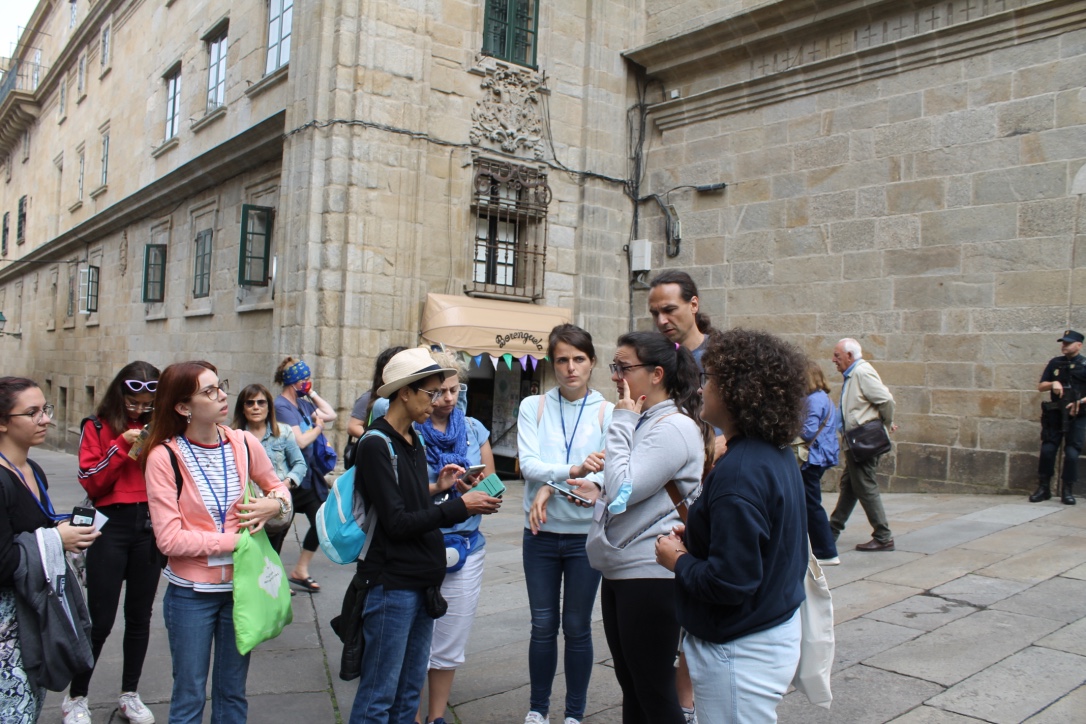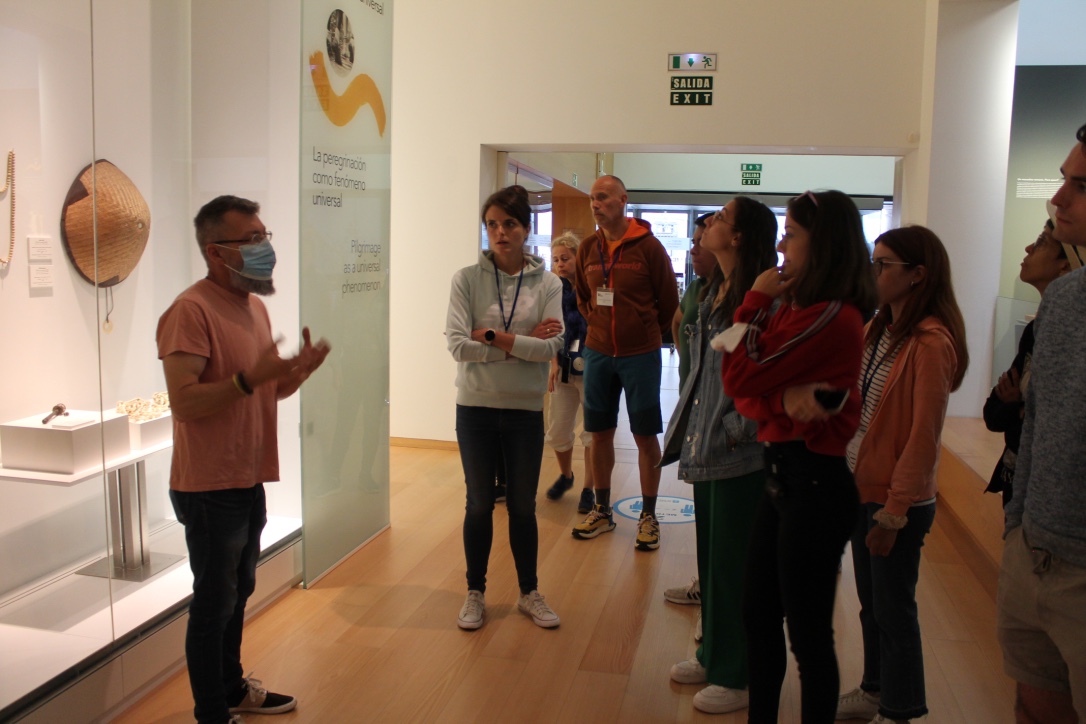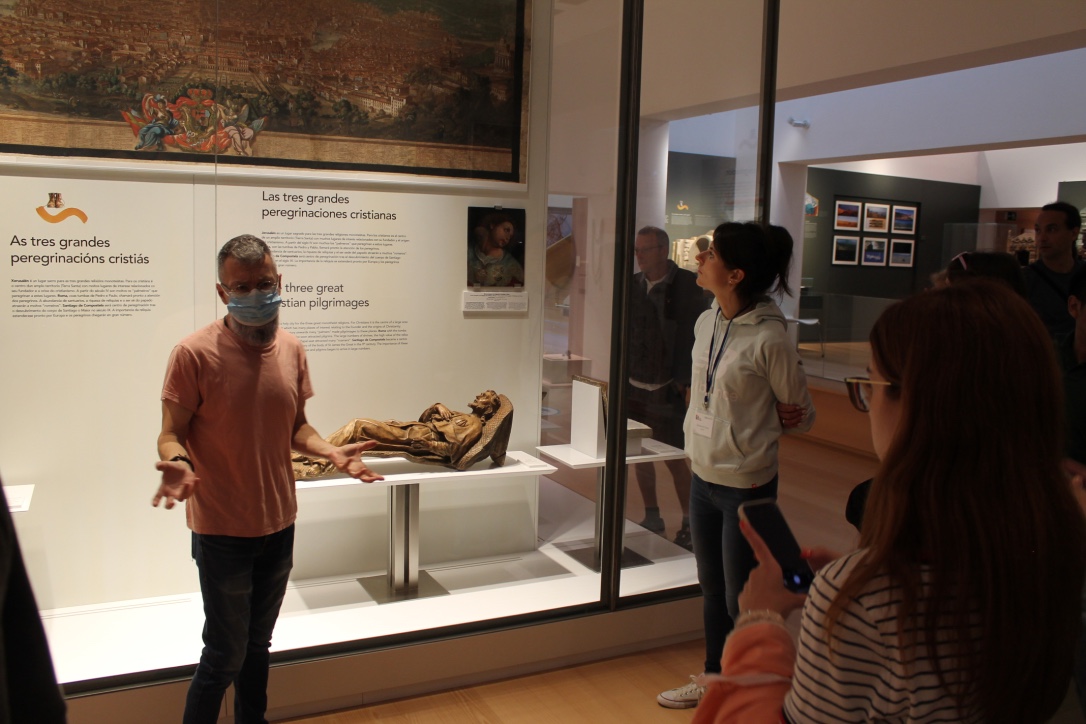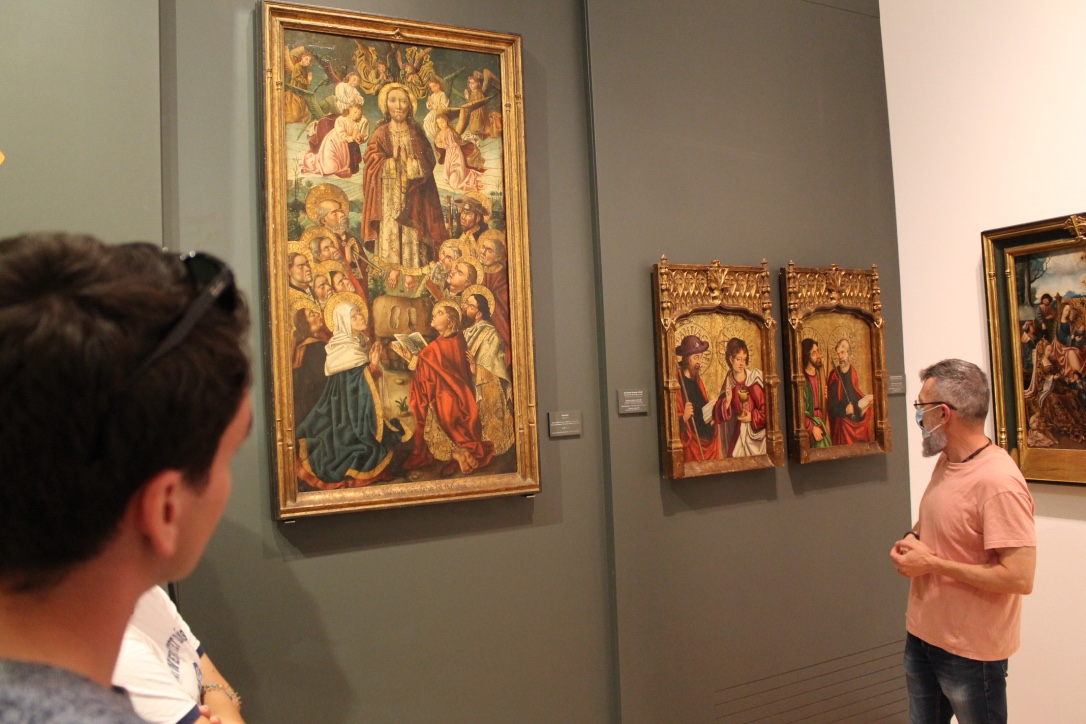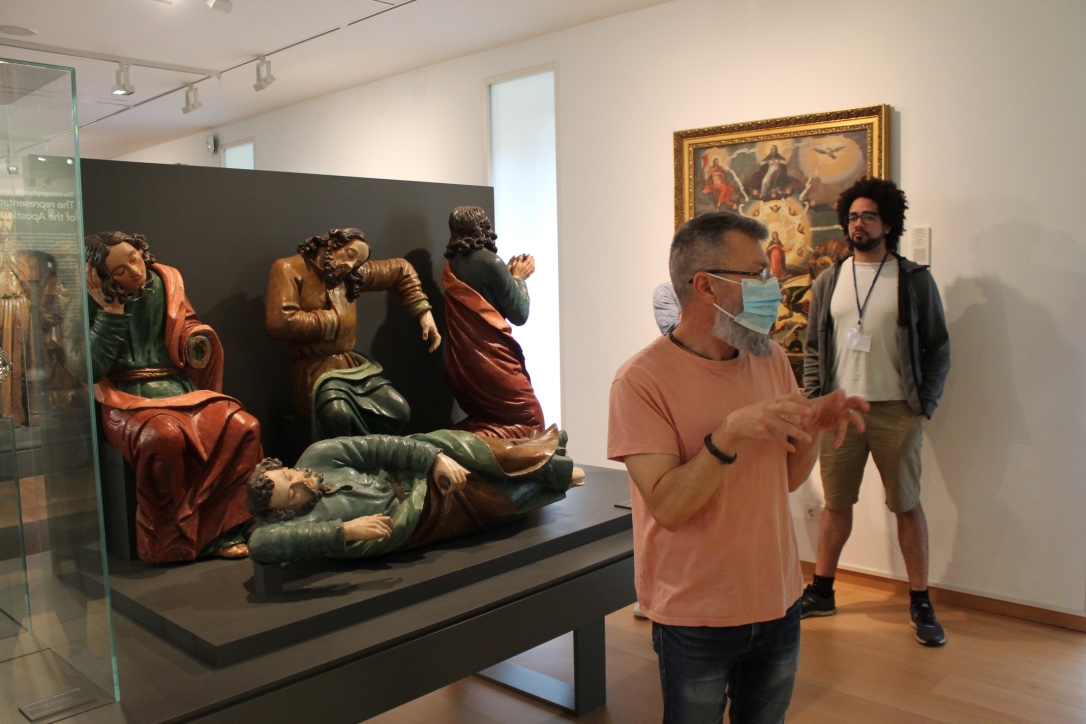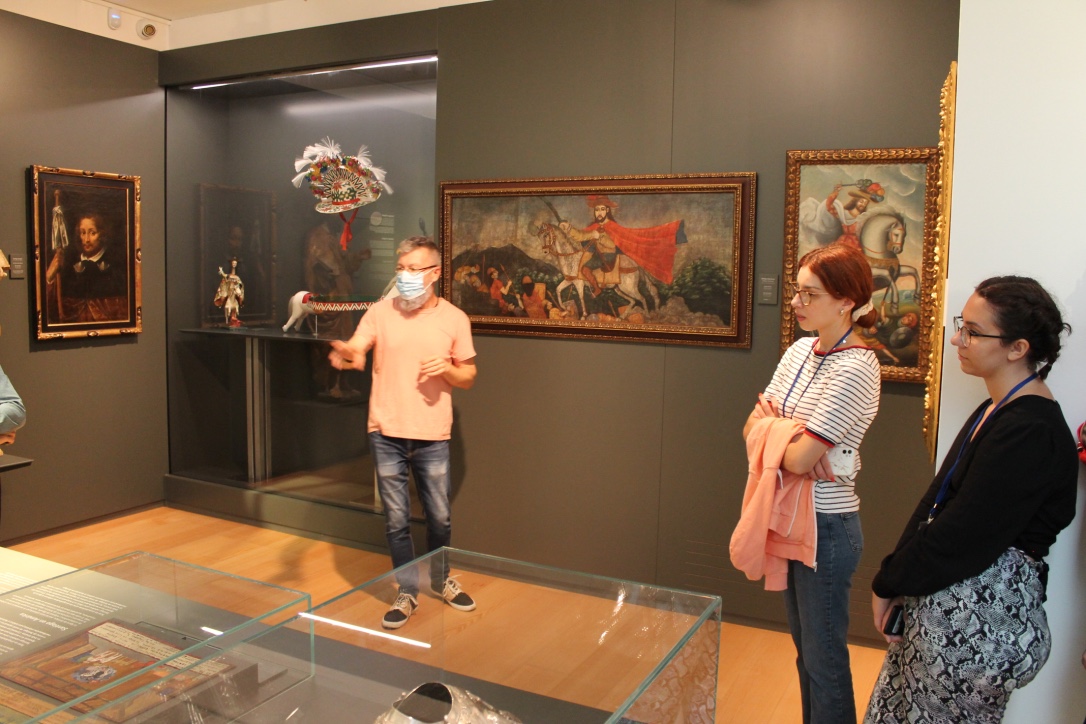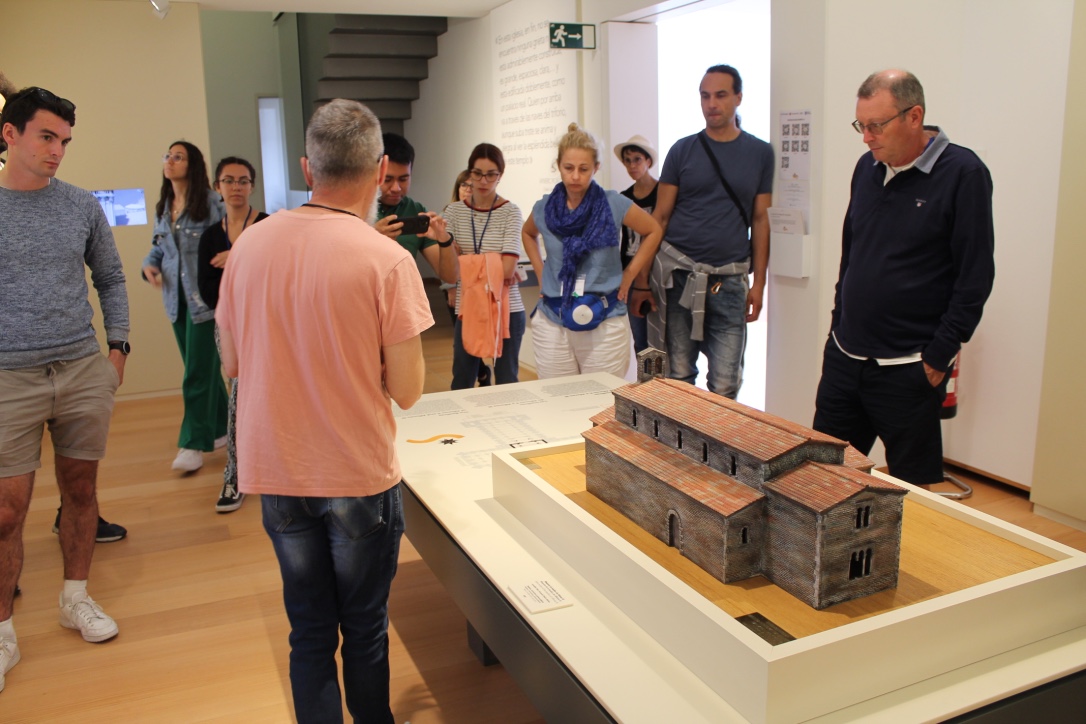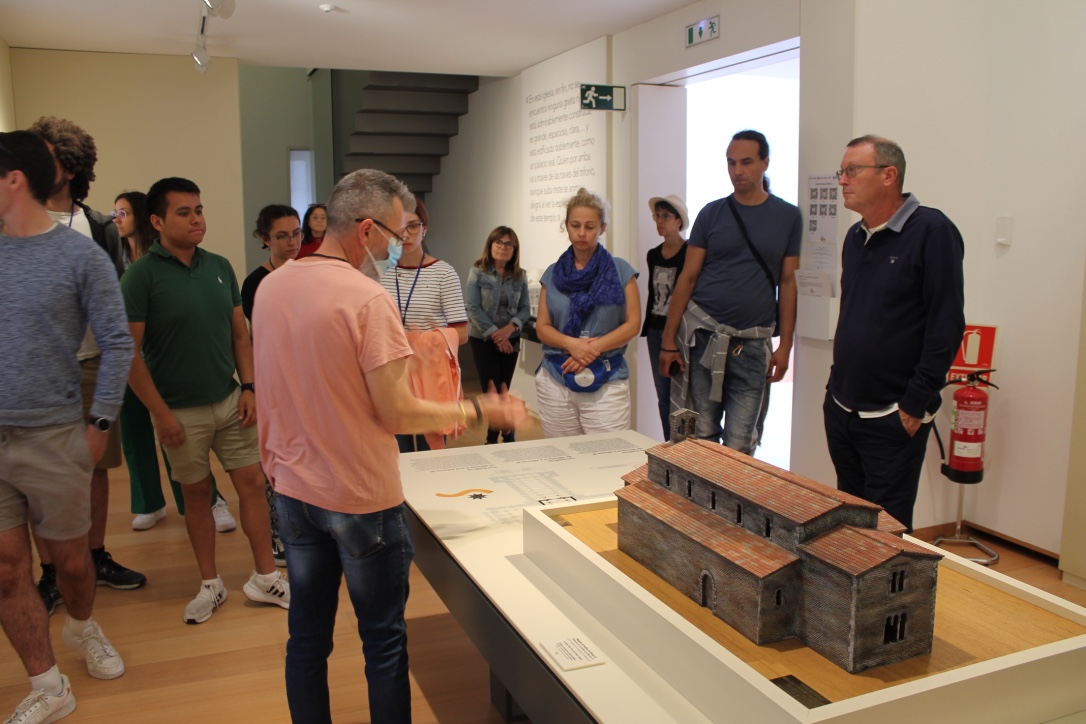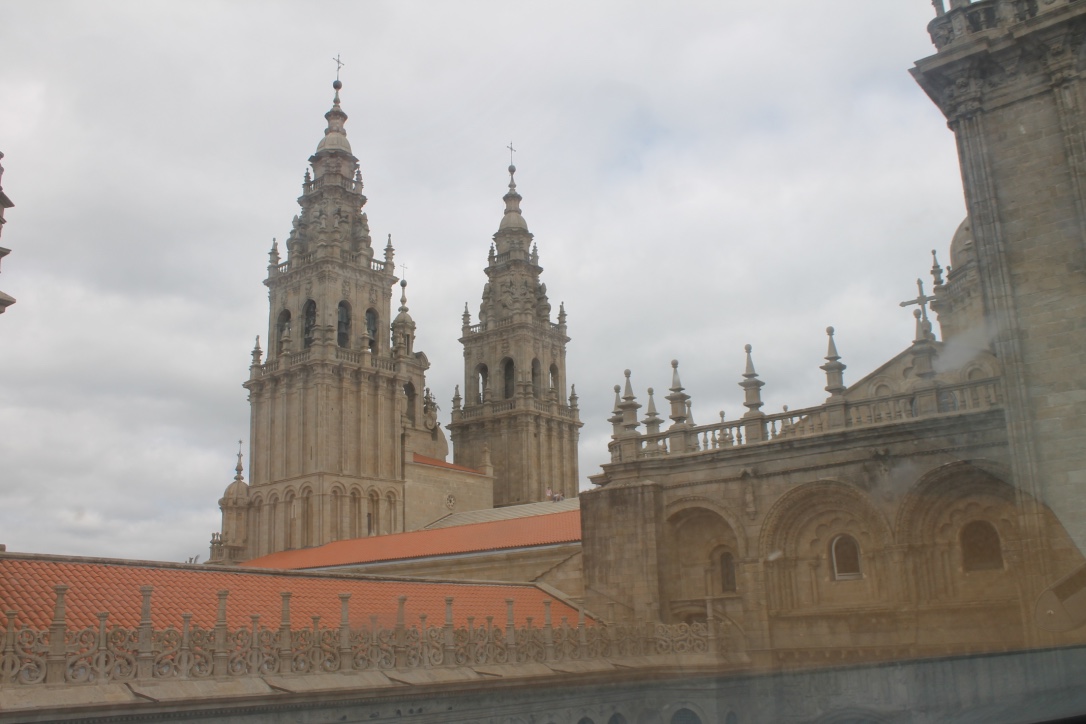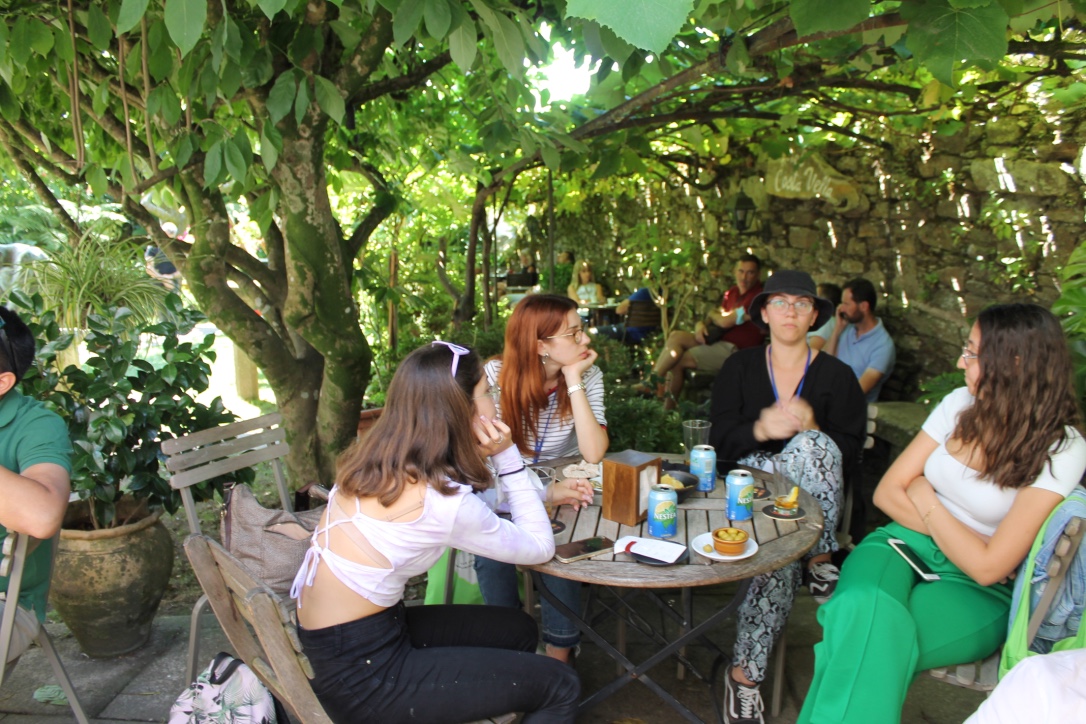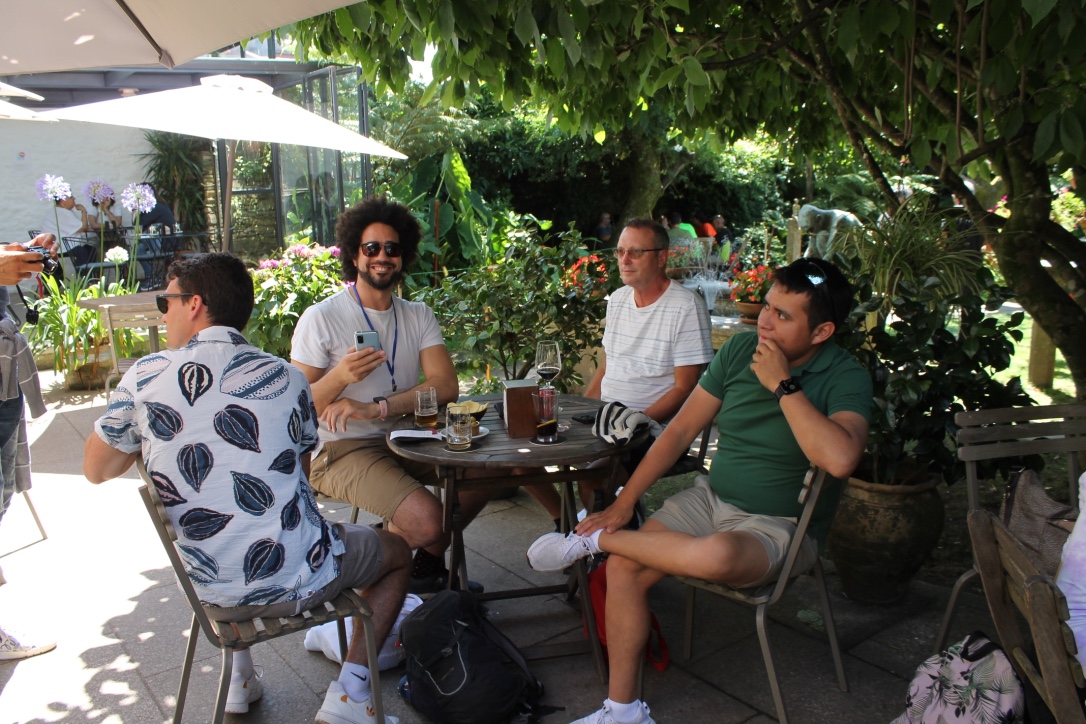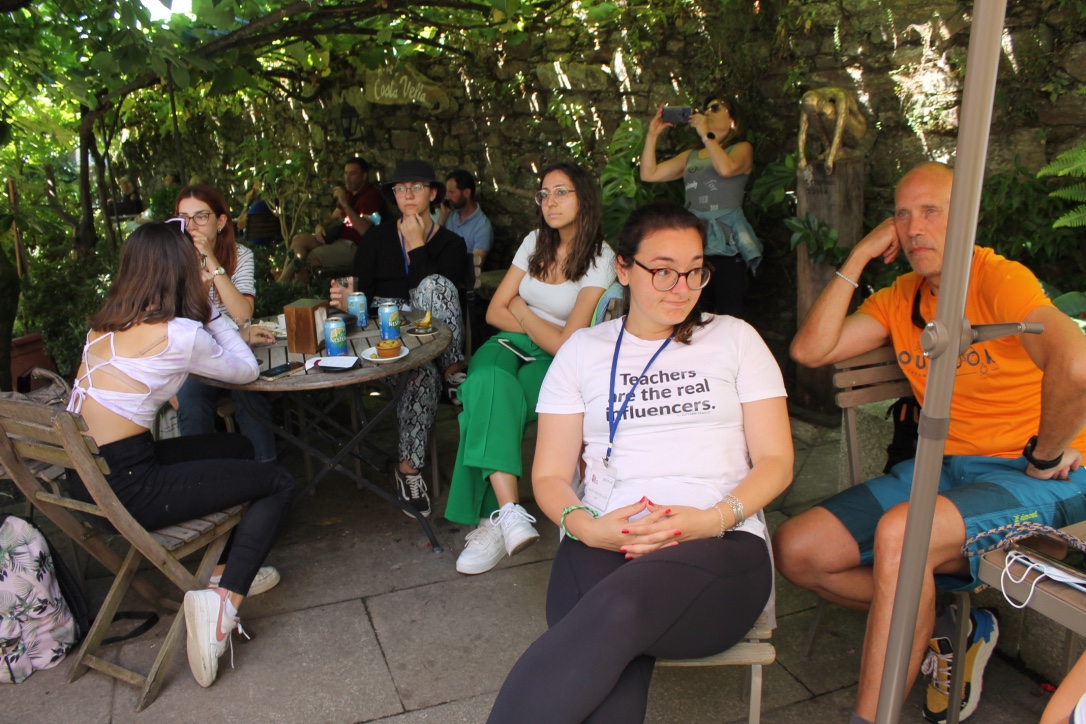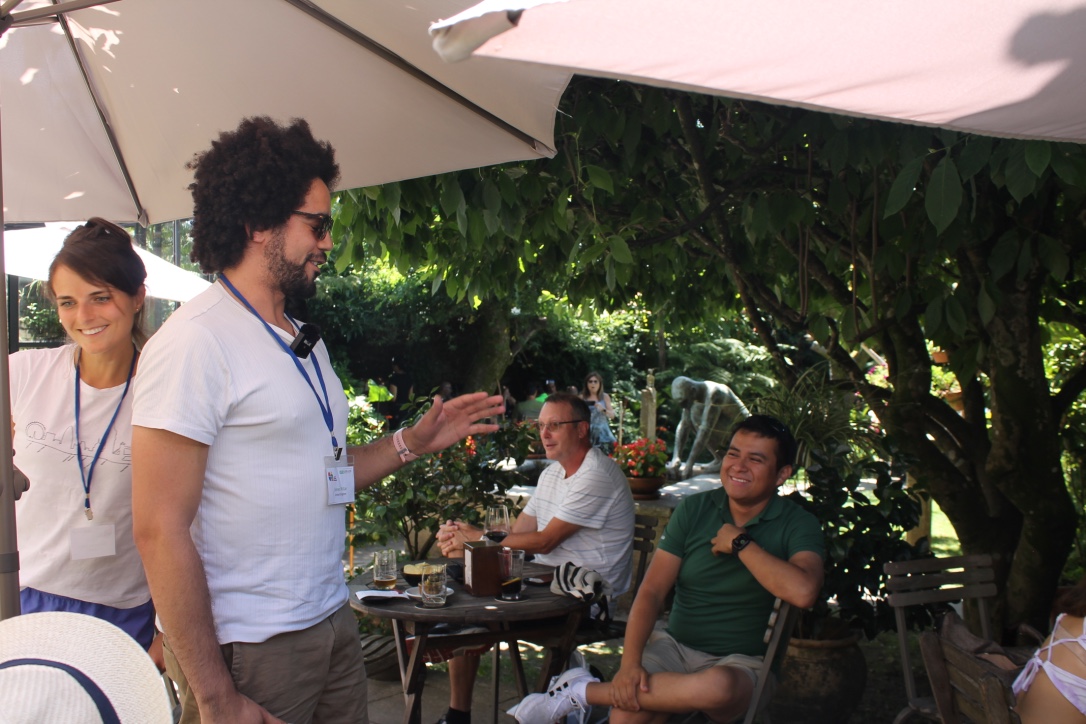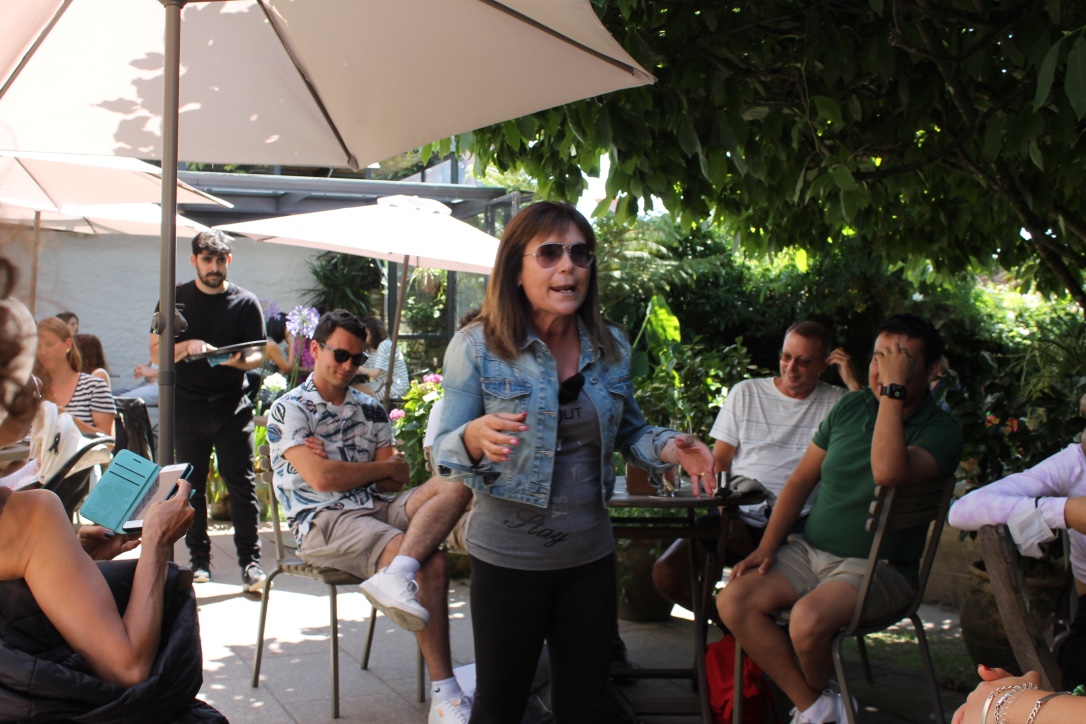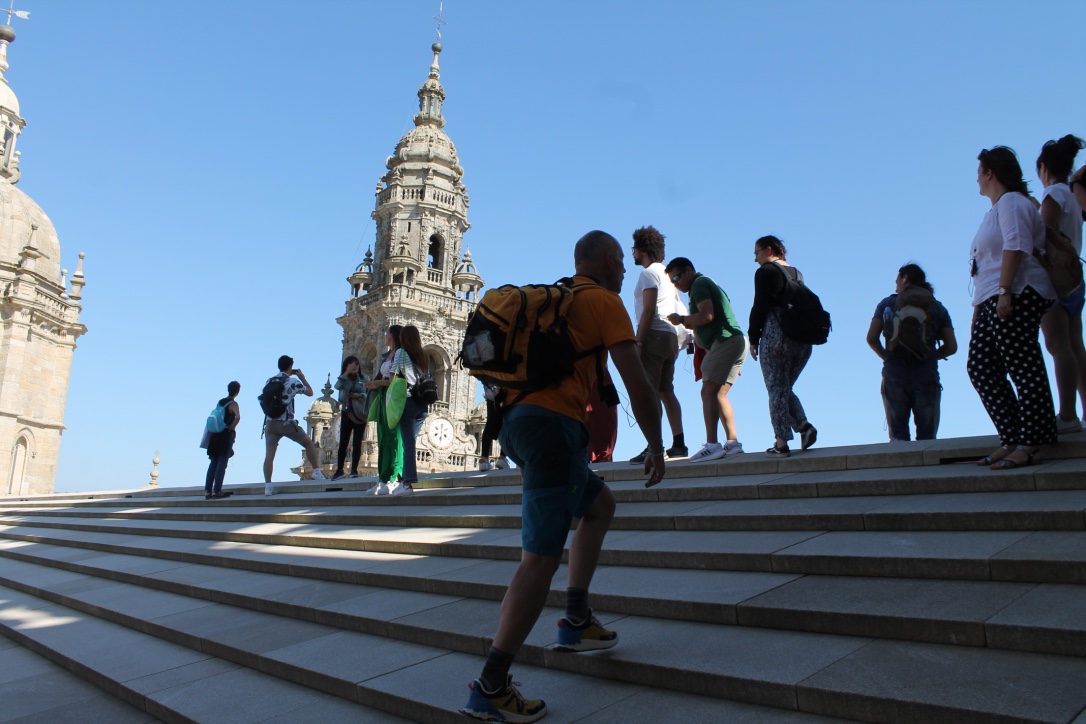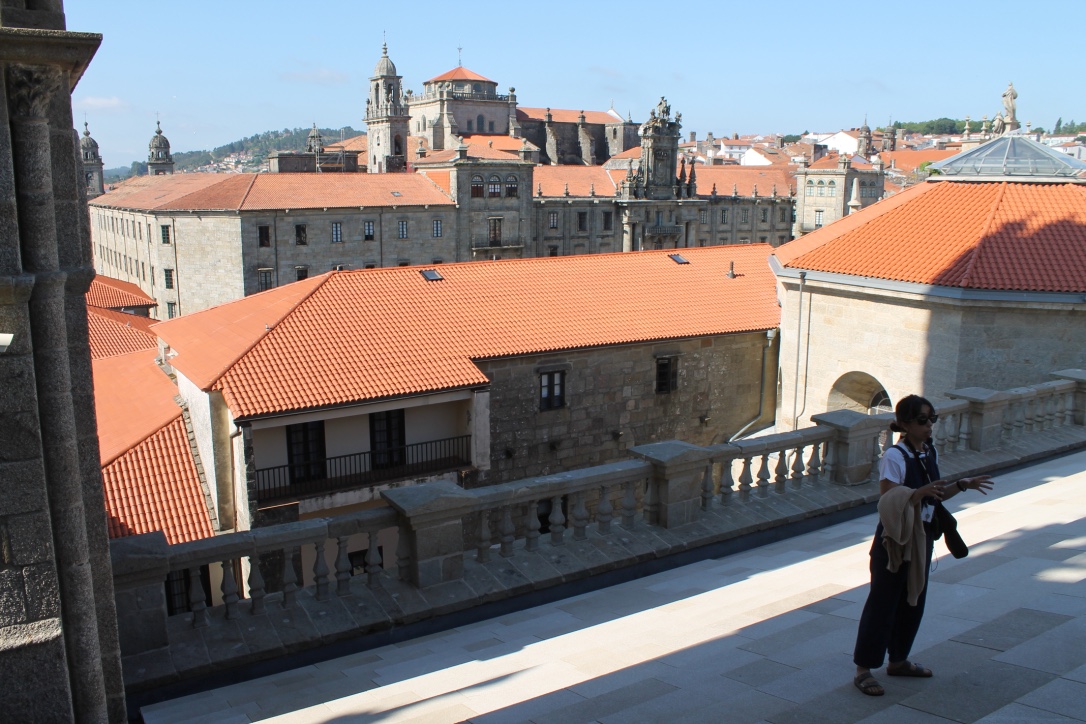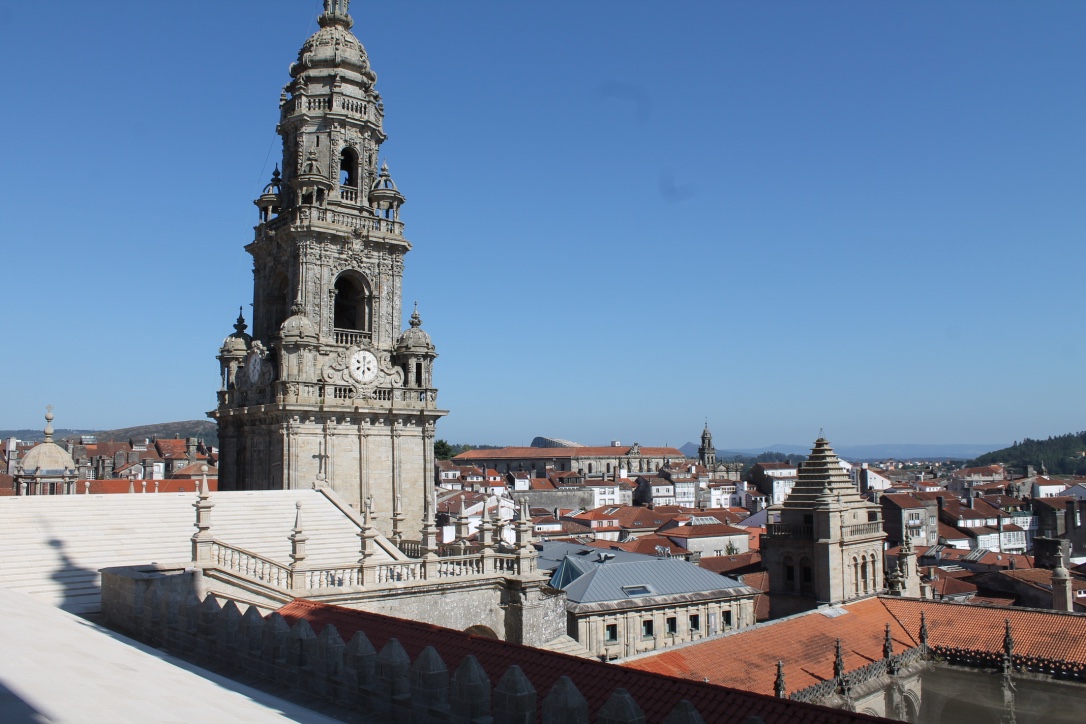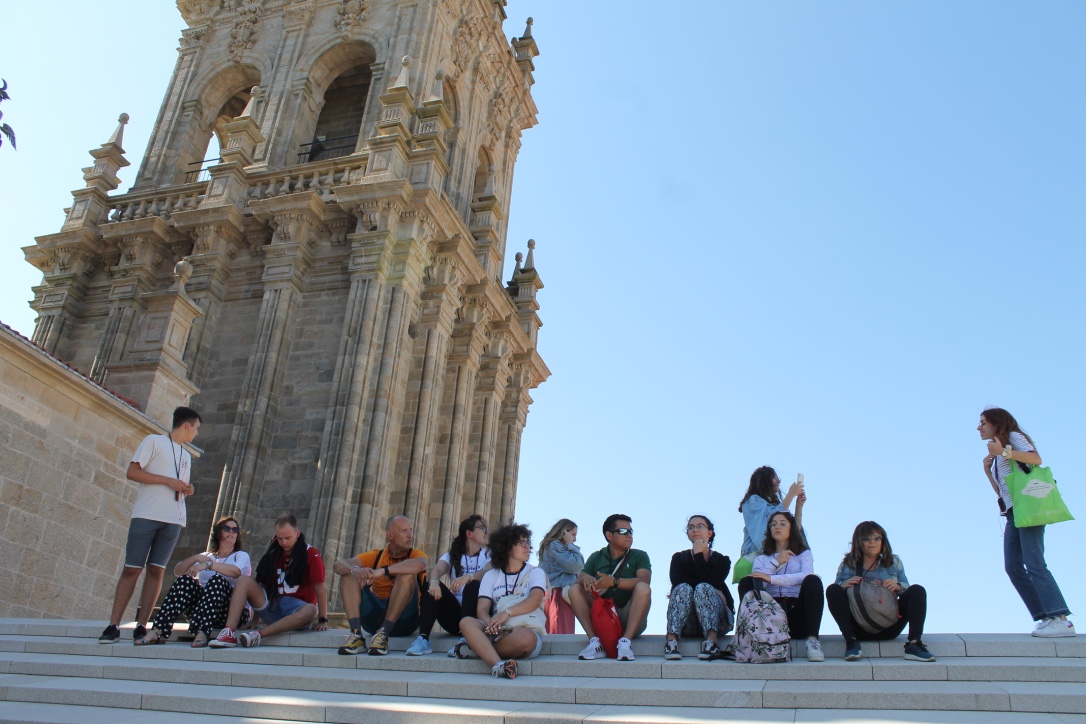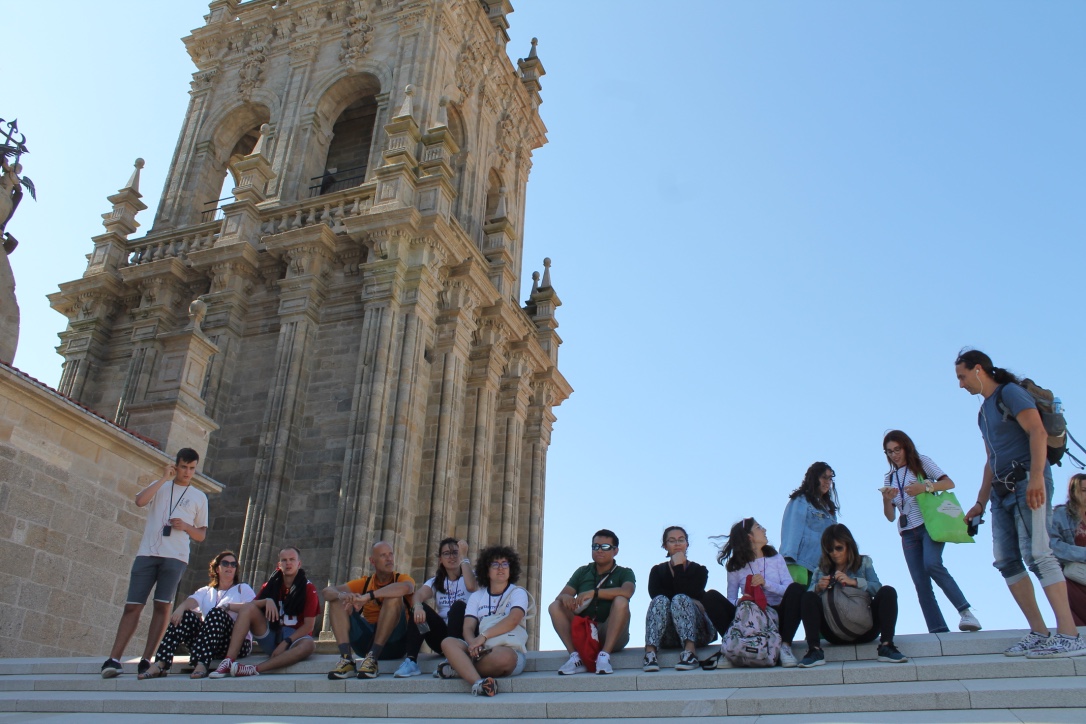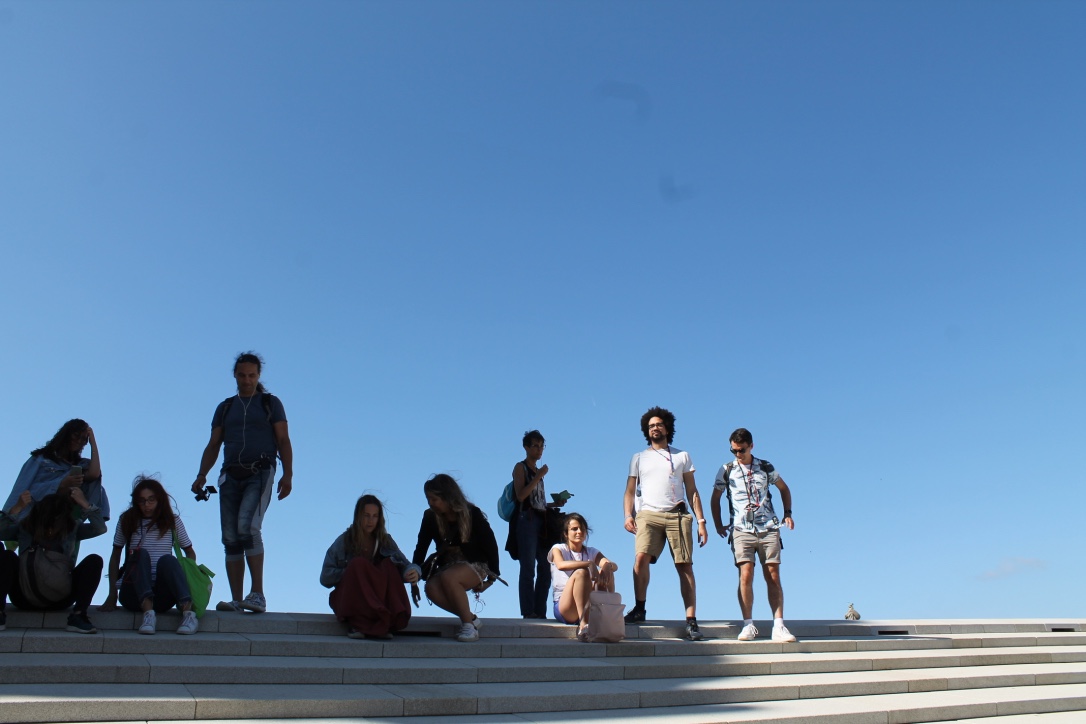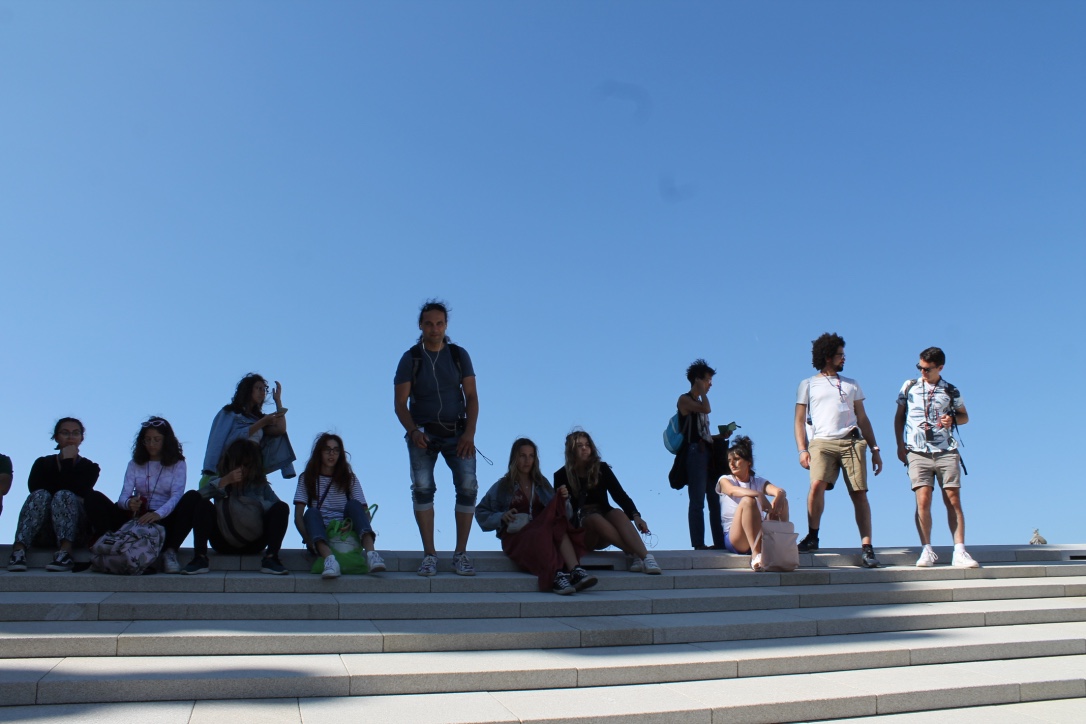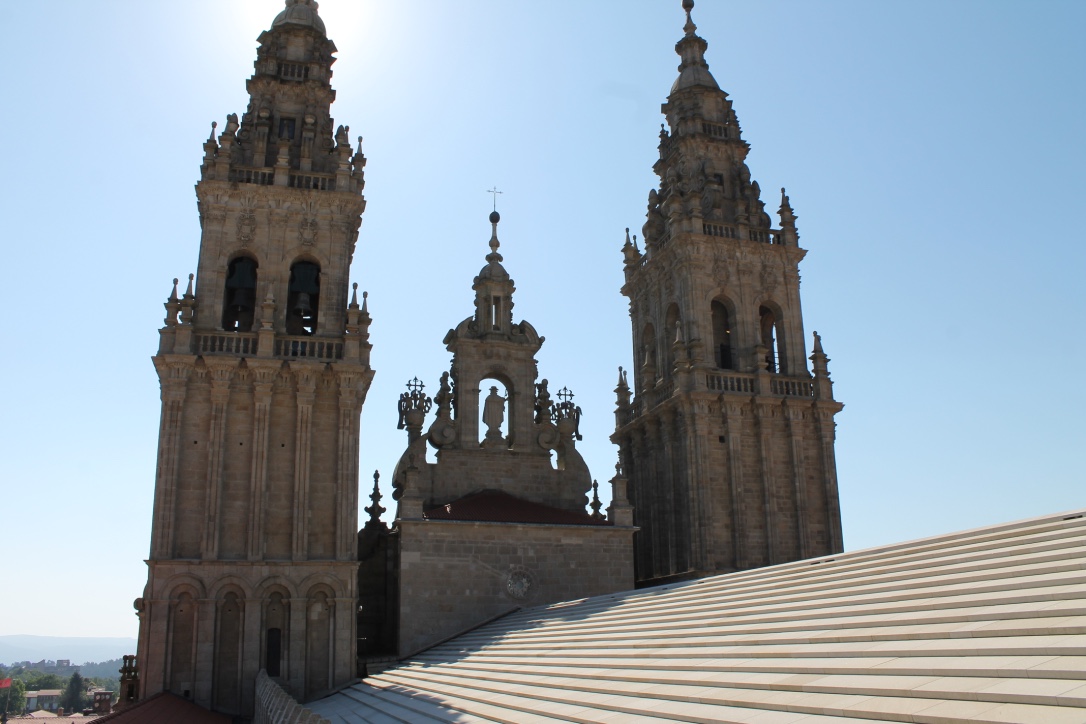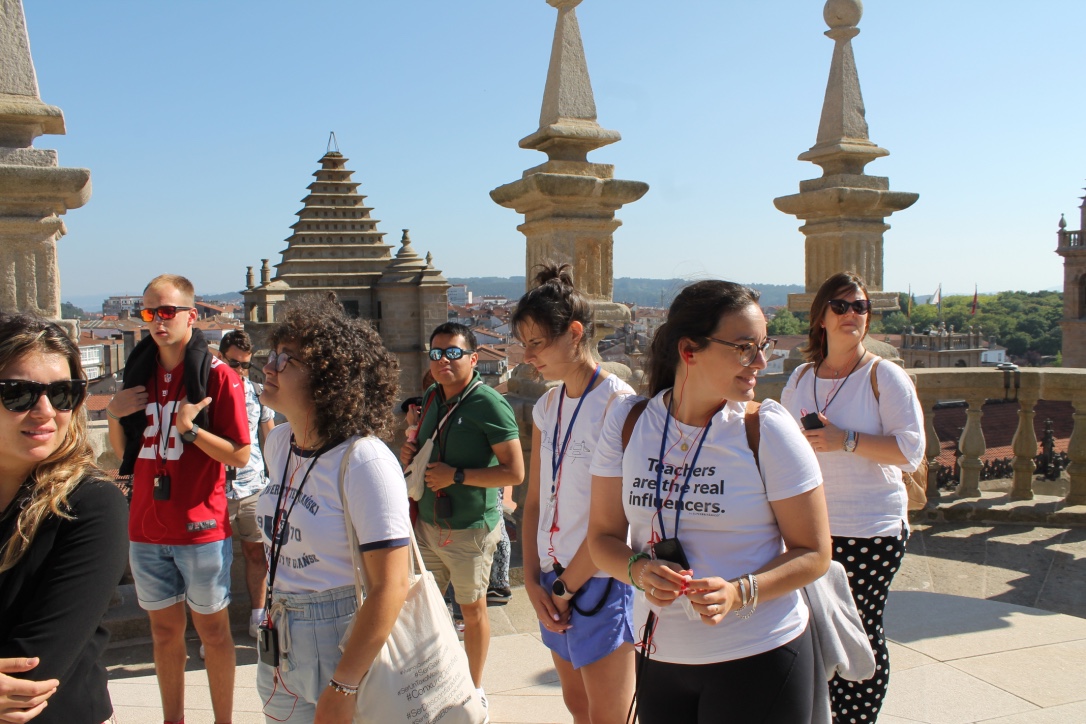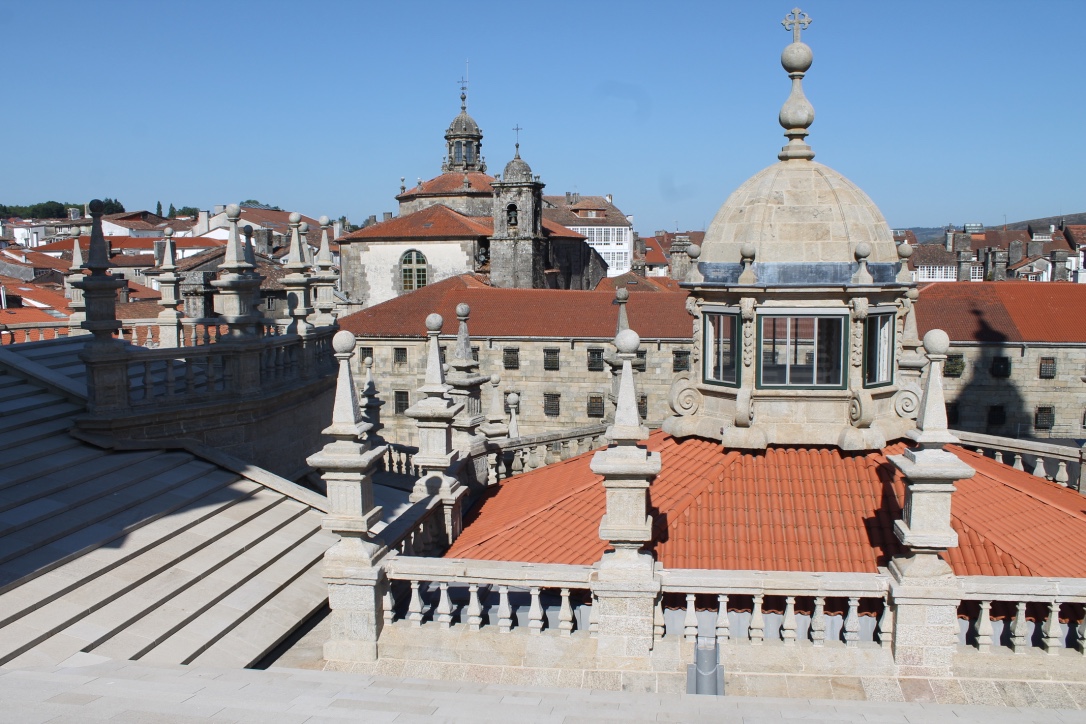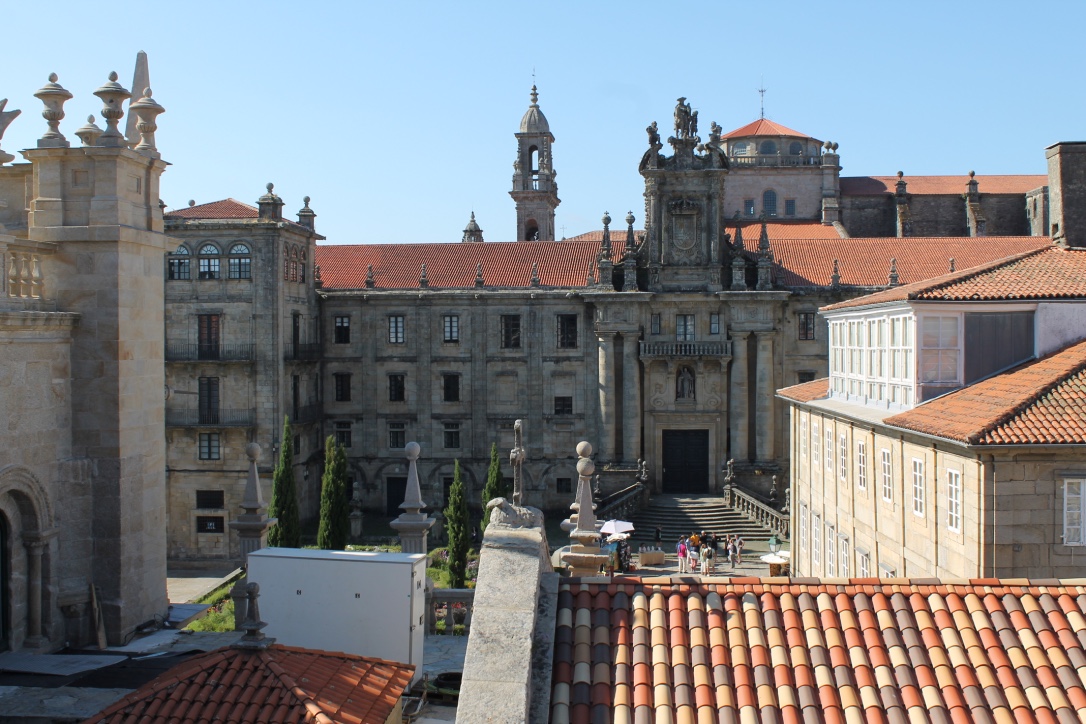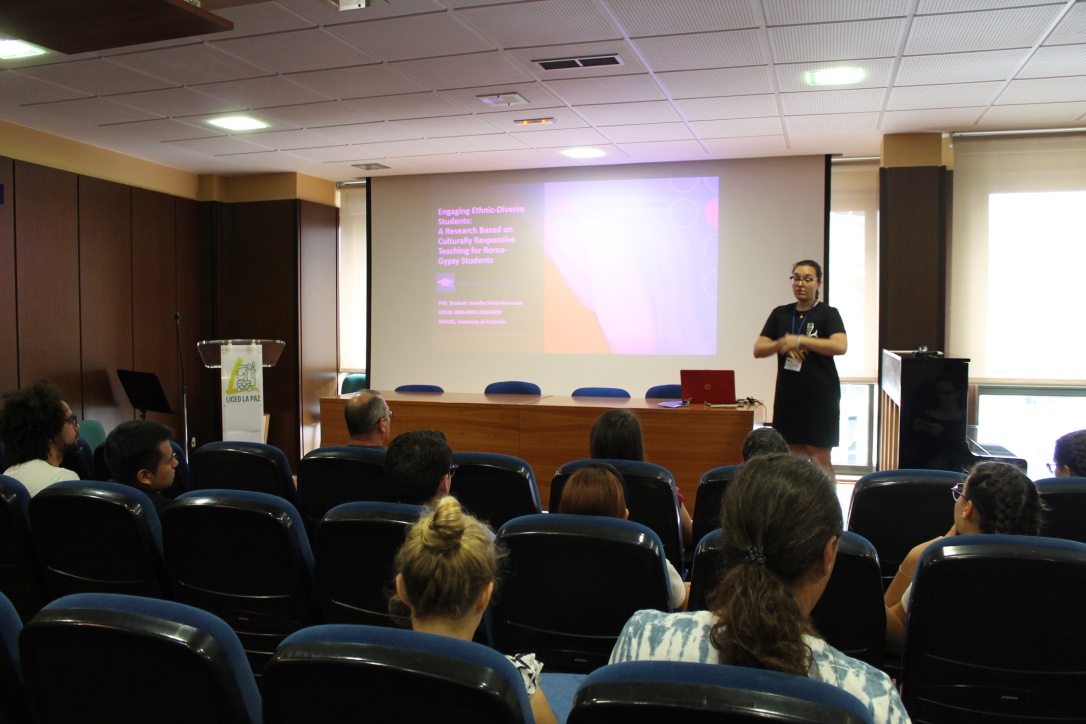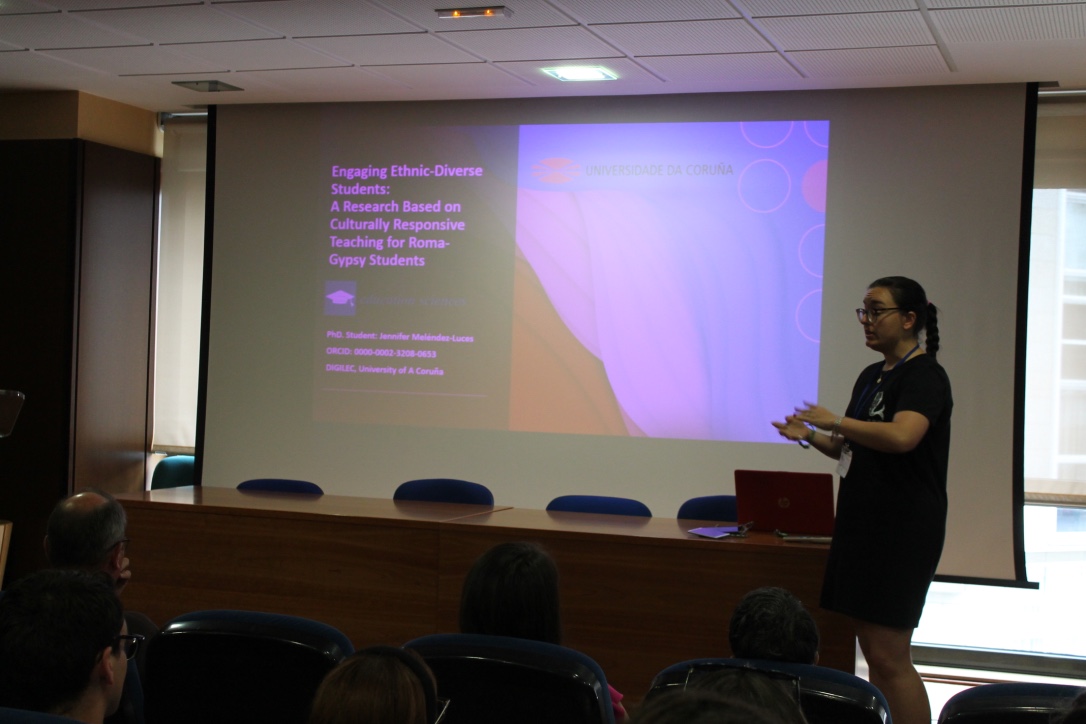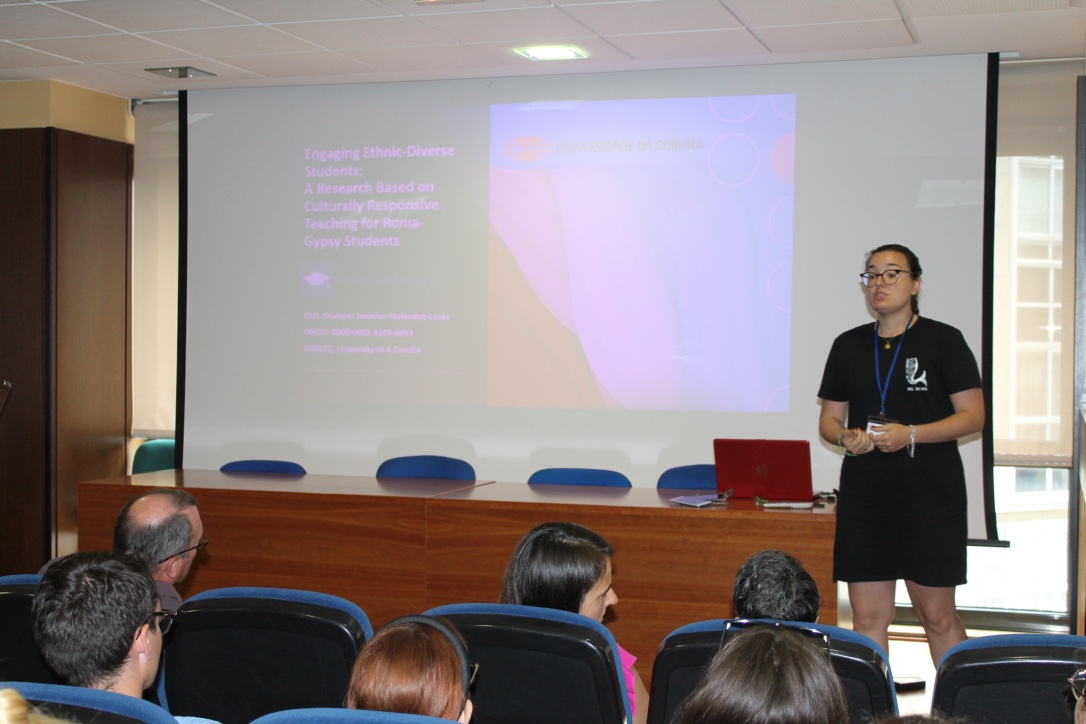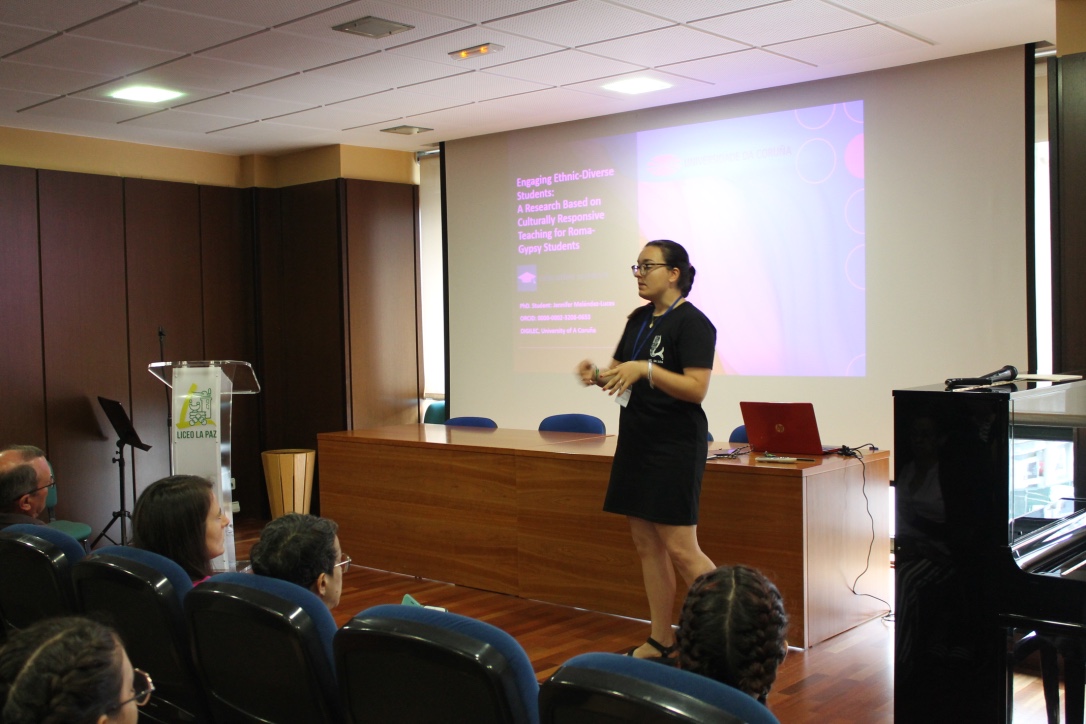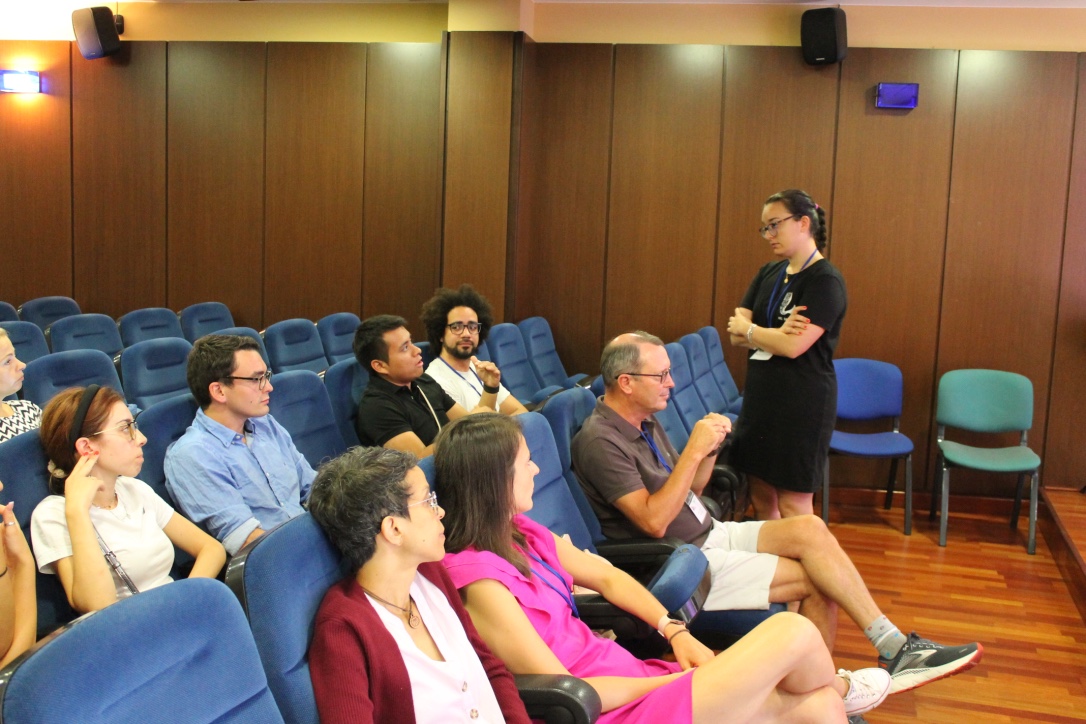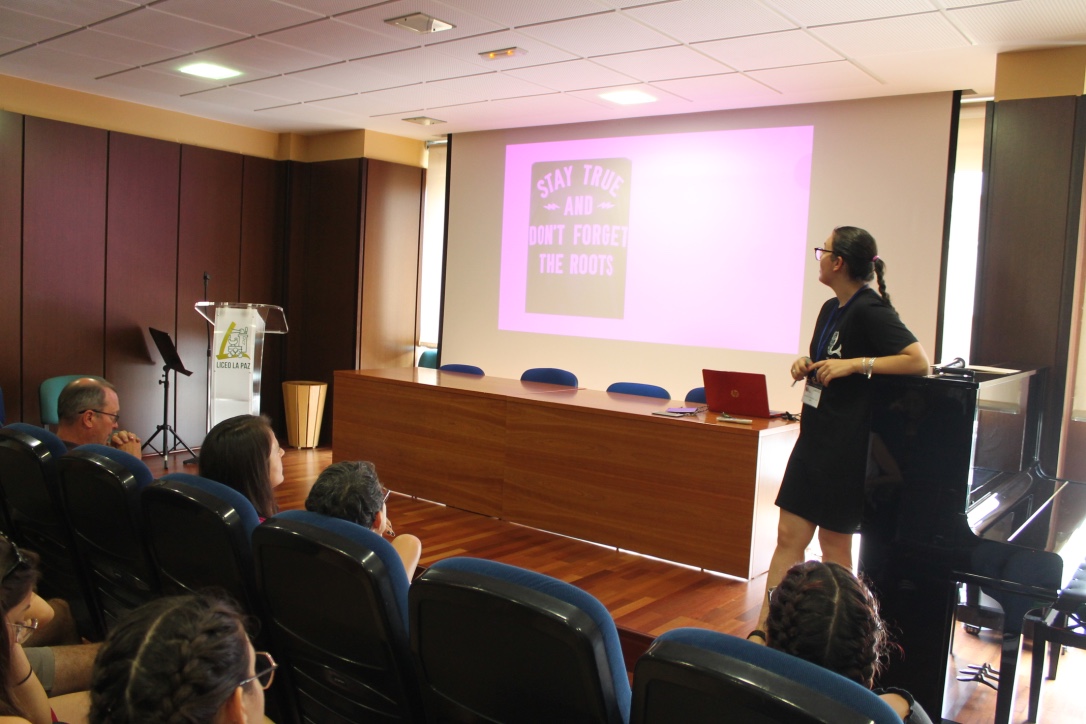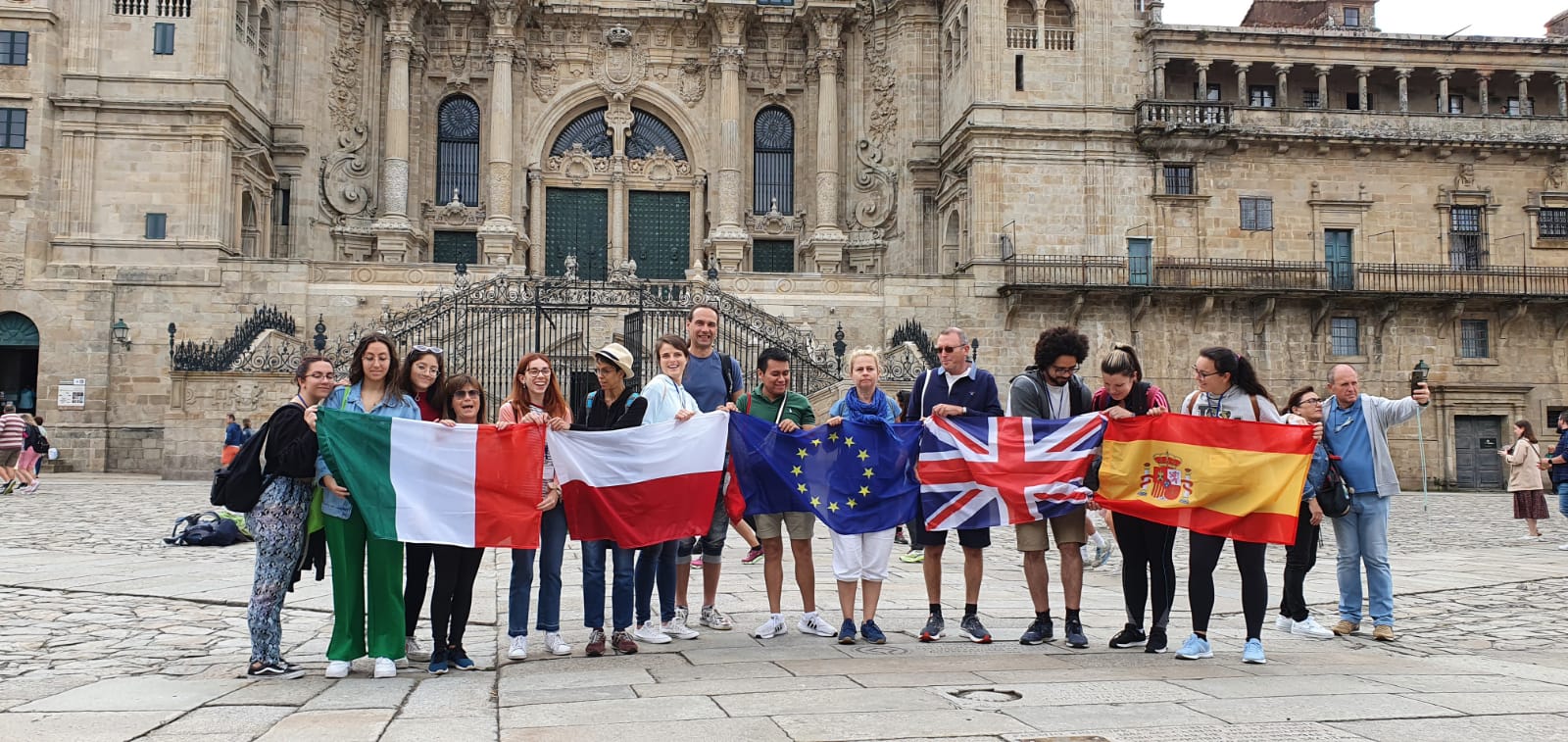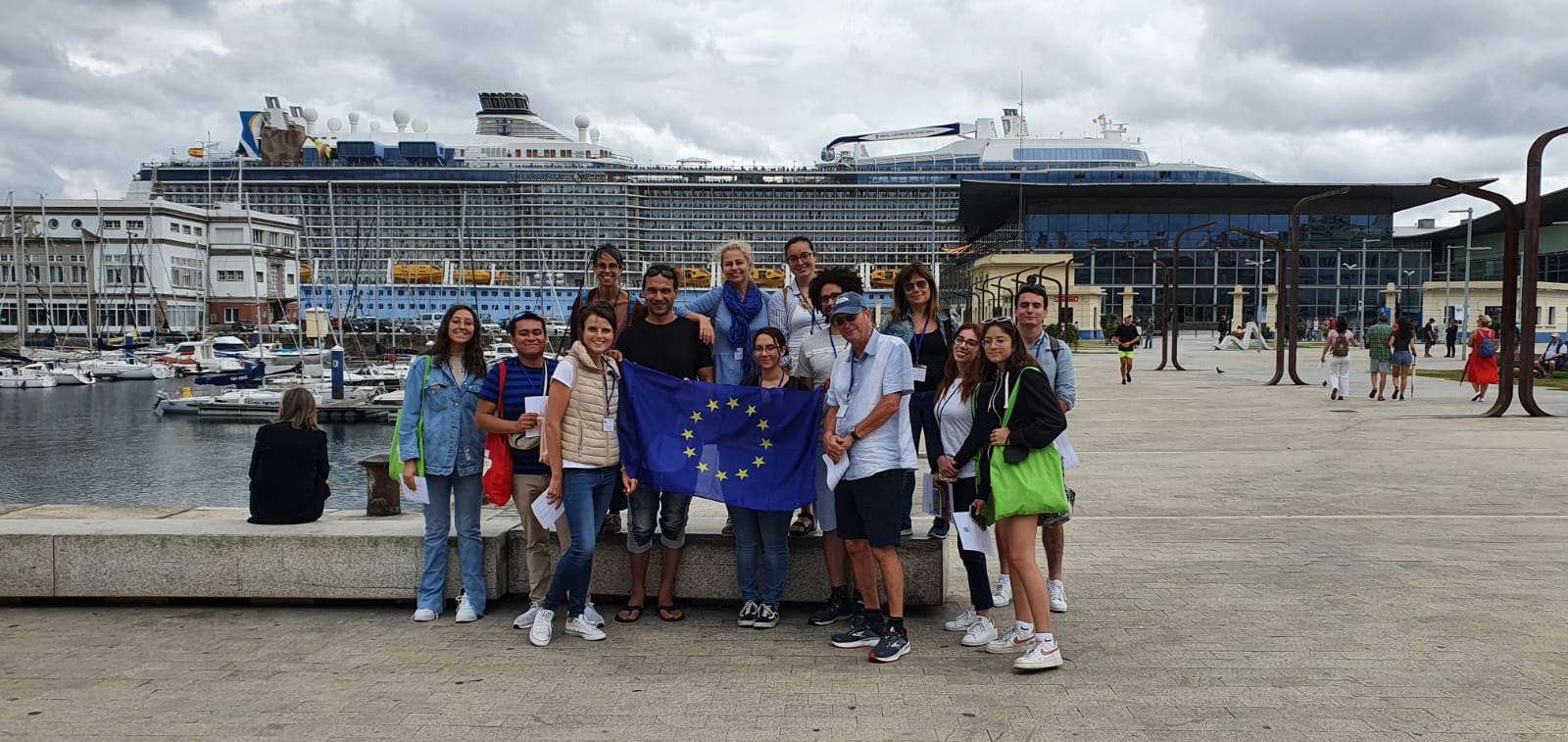
Our partners from Poland, Italy and United Kingdom arrived this Monday (18th of July) to the city of A Coruña to continue working on the activities designed for the European Project “Let’s Teach Europe” founded by the European Community through Erasmus +.
Along this week we have been doing different activities related to the Galician and Spanish Cultural Heritage. Among them we can highlight the Selfie Contest around the old town of A Coruña and through the English Way to Santiago; the touristic visit to the Hercules Tower catalogued as part of the Human Heritage in 2009; the completion of the last stretch of the Camino de Santiago – also intangible heritage – from Monte do Gozo (Joy) to Plaza del Obradoiro, where the Cathedral is located; the theorical training on Culturally Responsive Teaching delivered by the Erasmus Coordinator and PhD. Student Jennifer Meléndez Luces; and the participation in the Medieval Fair “Feira das Maravillas” taking place in the old town of A Coruña, among others.
Let’s take a deeper look at the activities organised by the host organisation in A Coruña:
Monday 18th of July
Our participants arrived on the 18th of July to our School. So, as most of them arrived late in the afternoon, activities were not conducted. Meanwhile, participants took advantage of their free time to wonder around the neighbourhood of Matogrande where the school is located.
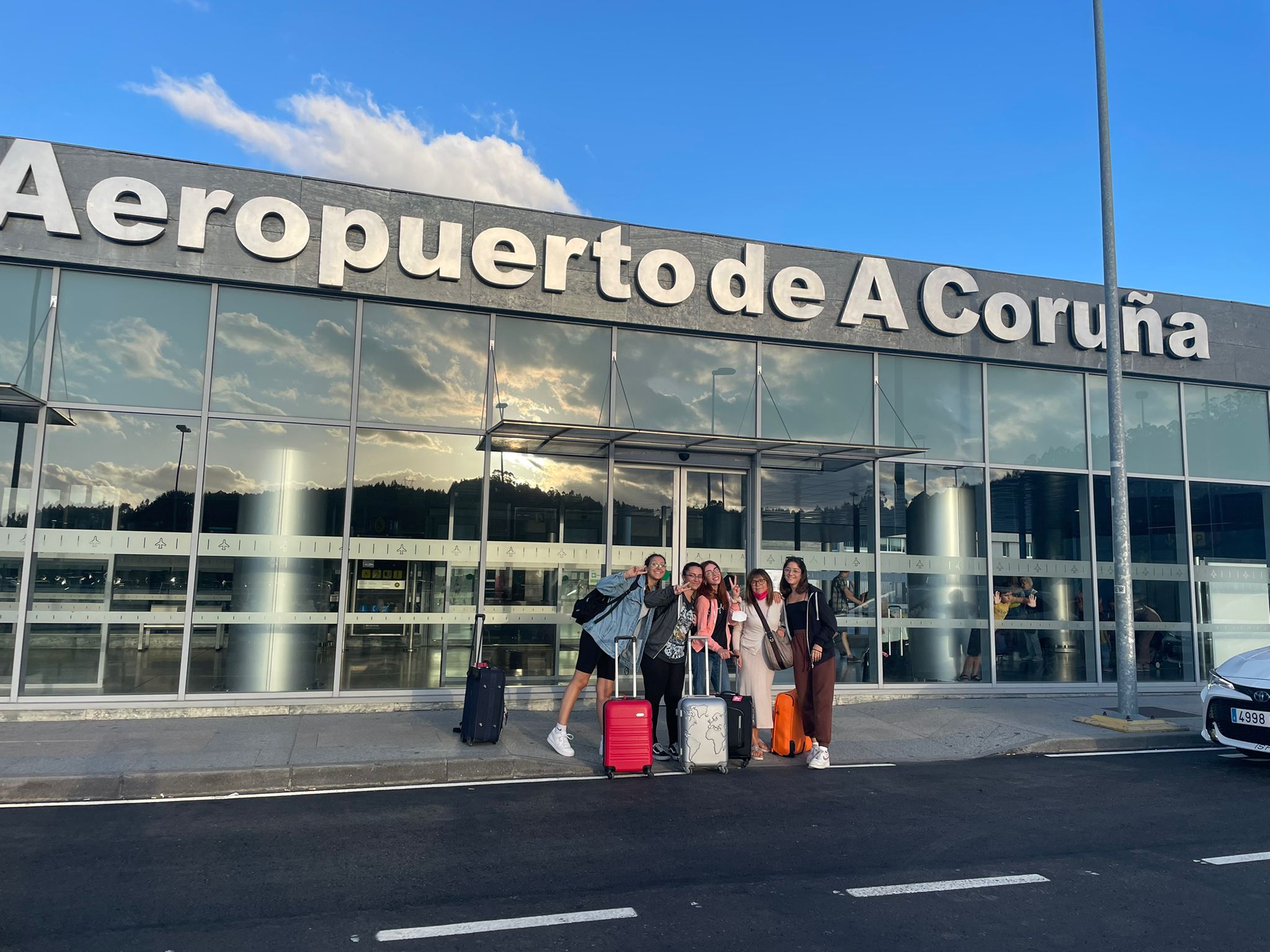
Tuesday 19th of July
Before starting the activities connected with cultural heritage, the participants were invited to the assembly hall of the school in order to receive a presentation on the history around Liceo La Paz School as well as the working philosophy of our ethos. Once the presentation was over, participants were given a welcoming pack (tote bags given by Xacobeo 21-22, pens, notebooks, maps of A Coruña and Santiago cities, touristic information flyers and booklets with information about our school among others). The next step was visiting the school facilities. Classrooms, playgrounds, vegetable patch, sport pitches, school canteen and the swimming pool were only some of the places that our participants took the advantage to visit.
After visiting the school, our participants took the urban bus to get to the city centre where the fist educative activity was waiting for them: a selfie contest on the history of the English Way to Santiago across the old town of A Coruña. The selfie contest had as starting point the “Marina” also known as “Cidade de Cristal” (City of Glass).
From there, students had to follow different tracks and ask people where their next stops were. To demonstrate they were able to find the different locations, participants had to take selfies and send them to the Erasmus Coordinators together with the answers to the questions posed. Among the places visited we can highlight San Anton’s Castle, the Army Museum, Sain Charles’ Gardens, Santo Domingo Convent, Barbaras Convent, the House of María Pita, Cornide’s Manner House, Azcarraga Square, Santiago’s Church, Puerta Real and María Pita Square.
Congratulations to Francesca, Mark, Sofía and James!!! The winners of our Selfie Contest.
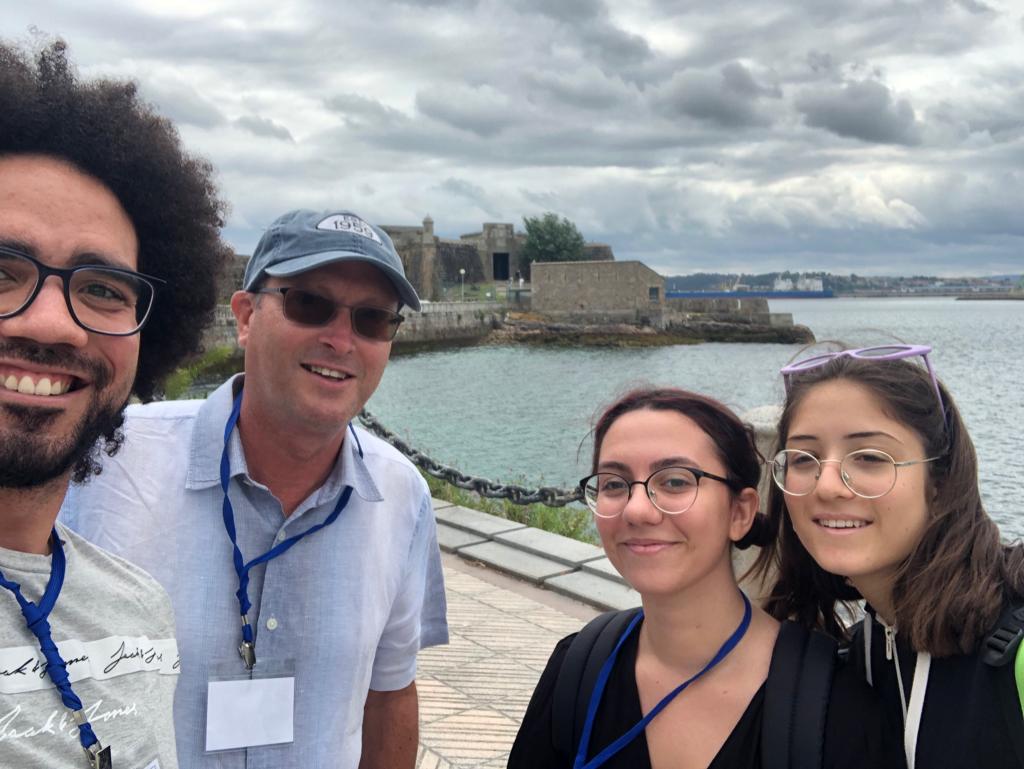
Once the game was over, participants had lunch together at a Local Restaurant called “Nova Ría”. There, they were able to taste traditional Galician dishes such as mussels, cockles, octopus, squid, cuttlefish, European squid, Betanzo’s omelette, backbone beef, pork loin, Padron Peppers, Santiago’s Cake, Granny’s Cake and Cheesecake. All this accompanied with Sangría, Estrella Galicia and water. Without forgetting traditional homemade coffee from Galicia.
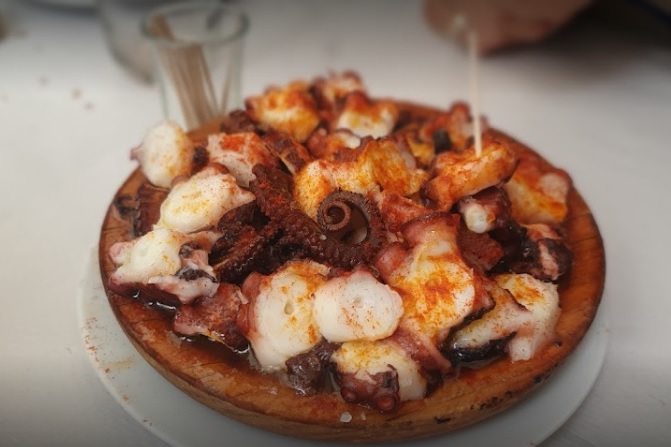
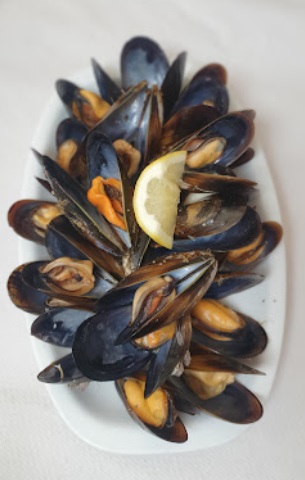
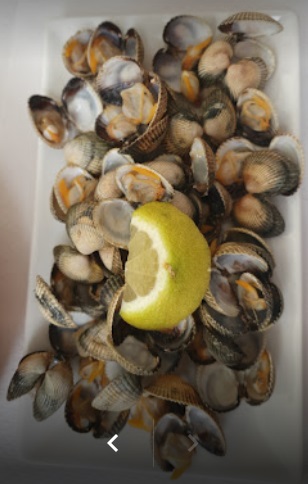
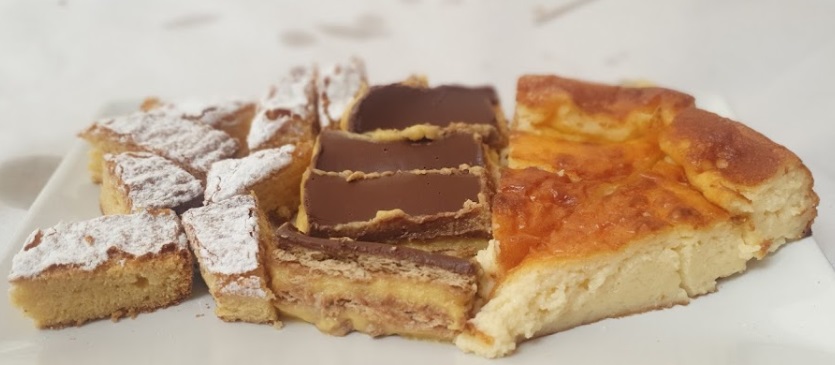
After resting for a while and with our bellies full, we all walked towards the Tower of Hercules. Once there, the guides offered a brief historical introduction to the monument and then we climbed the starts to the top of the tower. The views from the tower are: To the East we see the entrance channel to the A Coruña estuary, to the Northeast the outer port of Ferrol, to the Southwest the A Coruña aquarium, Las Lapas beach and the Riazor cove and to the West the Monte de San Pedro, and ancient military site.
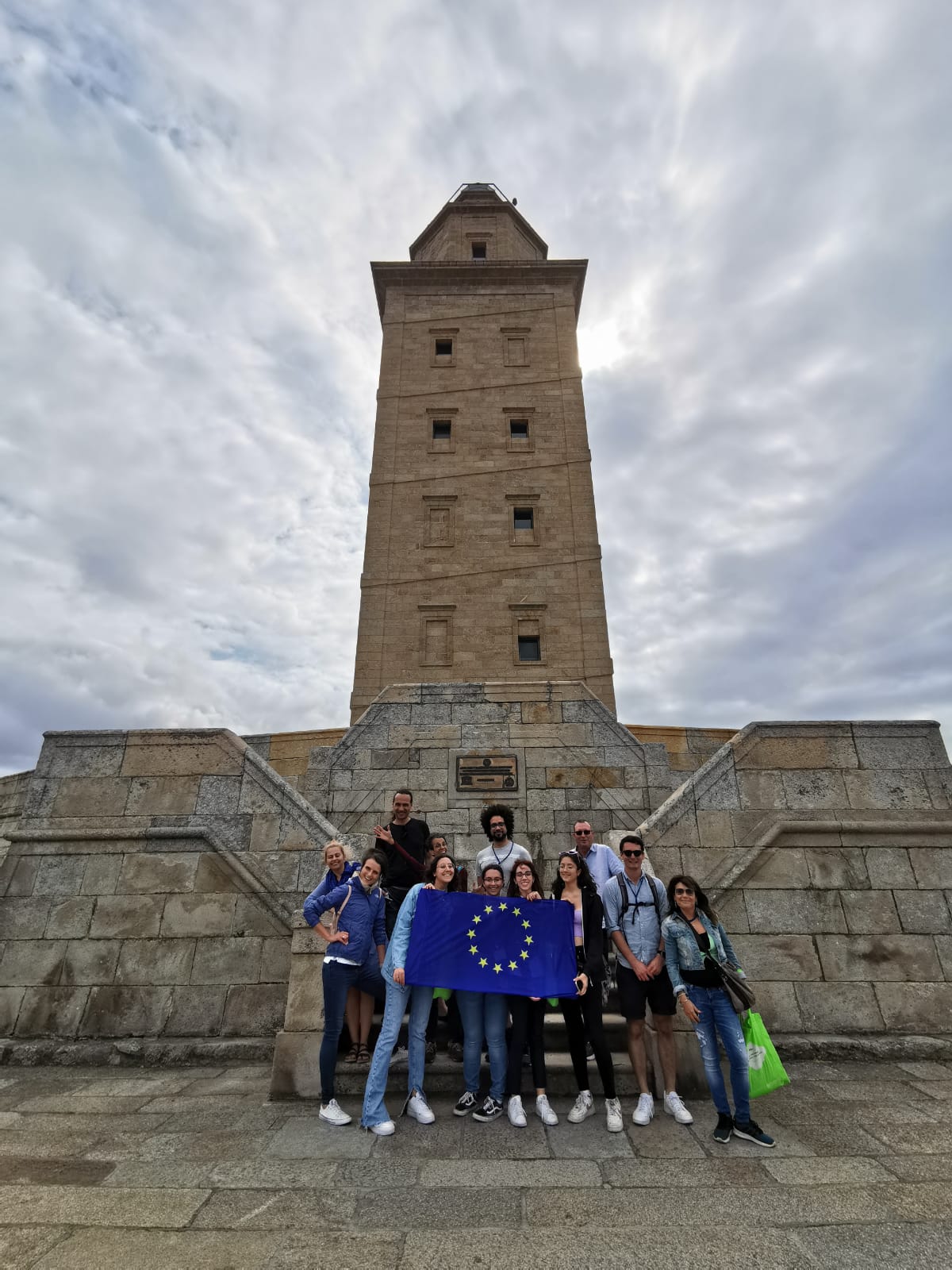
Once down, the participants walked towards the compass also known as “Rosa de los Vientos”. La rosa de los vientos is a work of art by Xabier Correa, from 1994. To understand the representation of this work we go back to Breogán. His son, saw from the top of the tower an emerald, green light, and distant lands, those of Ireland and decides to leave to conquer it, but failed in the attempt and died when the local rulers ambushed him, the Tuatha Dé Danann after breaking a truce. The Rose of the Winds collects all those traditions that will arise from this legend. It represents, on the one hand, a nautical chart, where we have the north marked by a black arrow, which is where the Mil Espàiner invasion supposedly sets sail and that if we travel 900km in a straight line, we would reach the coast of Ireland; and on the other it represents the Celtic mythology of the North Atlantic. In it, and through the eight quadrants into which it is divided, the Celtic countries that “the Milesians” had conquered, Galicia, Scotland, Wales, Cornwall, Isle of Man, Ireland and Brittany are represented. On the Rose are the names of each nation and their name in Gaelic at the top.
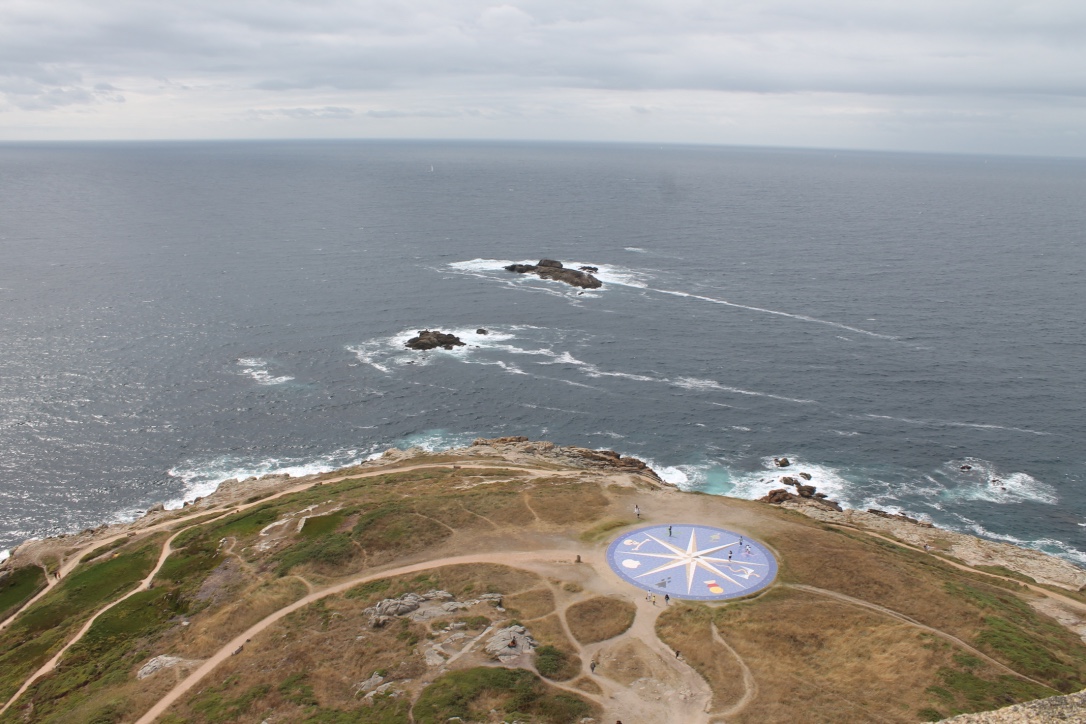
Wednesday 20th July
On Wednesday, a bus picked up us at 7o’clock in the morning to take us to Monte do Gozo (Joy in Galician). Once there we had breakfast at the pilgrims’ canteen to get energy to be able to cover the last stretch of the way to Santiago. Before starting to walk to the city, we walked towards a monument erected on the mountain in recognition of all the pilgrims that have done, do and continue doing the way. As, from there, it is possible to see – in the horizon – the top of the Cathedral. This fact, being able to glimpse the Cathedral rooftops, is the reason why the Mountain receives the name “Gozo” as after lots of kilometres, when the pilgrims reach this point, the view returns them the joy and energy to keep going.
On the way down, we were able to see the milestones that identify the kilometres left to get to the Cathedral. All of them incorporate the shell that represents the way and the yellow arrow pointing the direction that pilgrims need to follow. While walking, our participants were invited to tell traditional stories and legends from their countries in an attempt to emulate the Canterbury Tales. Later, and after 4km, all the participants arrived at Plaza del Obradoiro where they were able to get the beautiful picture of the façade of Santiago’s Cathedral. After arriving there, the participants were taken to the Pilgrims Museum where they received information about the different pilgrims around the globe – such as the Kumado Kodo (Japanese Way) – as well as information about the different trends in which Santiago has been represented in art: Santiago as an Apostle, Santiago as a Pilgrim, and Santiago as a Knight. Also, from highest floor of the museum we were able to admire the rooftops of the Cathedral that we had the opportunity of visiting later.
After the visit, we went to the restaurant where we had lunch “Casa Manolo” known as “the other cathedral”, has been the protection and remedy for pilgrims from all latitudes, refuge for souls lost on the Camino and joyfully rediscovered between the tables and stoves of the mythical Santiago and Santiago restaurant. It is, for many, the last real contact with the Camino de Santiago before the hard return, the last hug, the penultimate “Good Way”.
Coffee, songs, stories, and games took place a little bit later after crossing the alleyway near Inmaculada Square and arriving at the beautiful garden-terrace of Hotel Costa Vella. Hiding from the sun under vine trees and sunshades, we share experiences, had fun together and mingle with people from other cultures who had experienced the way.
Located in Porta da Pena, this hotel began its journey in 1999 in a traditional architecture building that had been abandoned for fifteen years. The garden is striking at first glance, with the tables arranged among the trees, a vine covering one side, views of the Costa Vella and San Francisco from the wall that it shares with San Martiño Pinario or a fountain located in the center of the land, which is usually surrounded by apples from nearby trees.
In the afternoon, around 6 o’clock, we went to visit the Berengela Tower and the Rooftop of the Cathedral. The Berenguela tower was built in 1318 by Archbishop Berenguel de Landoira (hence its name, “Berenguela”) to defend the cathedral. Three hundred years later, in Andrade’s aforementioned redesign, an elegant baroque finish was added. At the top of the Berenguela there are three elements:
- The main bell of the Cathedral. Originally there was another one also known as Berenguela, weighing almost 10 tons, which was replaced in 1989.
- The clock, added in the 19th century
- The protagonist of this article: the flashlight designed by Andrade.
The Berenguela lantern was designed to mark the place of Santiago’s tomb at night. That is, it acted like an inverted beacon: you didn’t have to run away from it but approach it. The lantern of the Clock Tower of the Santiago Cathedral is lit on the first day of each Xacobeo year and remains so until the end of the Holy Year.
Thursday 21st July
On Thursday morning, July 21st, the training session on “Engaging Ethic-Diverse Students: A Research Based on Culturally Responsive Teaching for Roma-Gypsy Students” took place. Students had the opportunity to reflect on the methods to engage minority groups within the classroom and how the cultural background and the cultural heritage of each minority group influence their learning process.
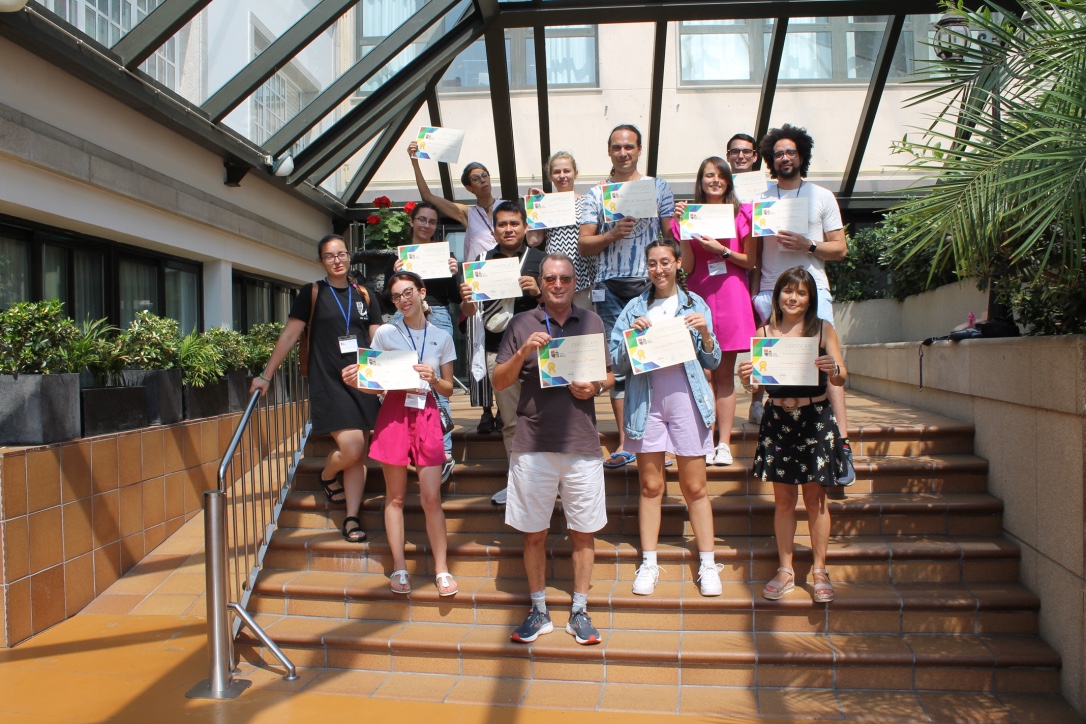
After the training session, we had lunch all together in the school canteen and then we headed to the old town of A Coruña to enjoy the beautiful Medieval Fair. During the Medieval Fair, the art and fantasy of the Middle Ages flood the old part of the Herculean town over five intense days in which the streets are full of jugglers, puppeteers, craft stalls, food stalls, concerts, tournaments and other activities for the occasion.
The fair also has a space dedicated exclusively to children with games and workshops, and there are also street performances that delight everyone who visits the city these days. In the Medieval Fair it is also common to meet characters of the time; Jugglers, buffoons, puppeteers, who encourage visitors with their cheerful and carefree spirit, with numerous craftsmen who display their beautiful objects in stalls set up for the occasion. After having dinner in the Medieval Fair and trying the typical food, they gathered together around the school to say goodbye.
It was a wonderful experience and we are looking forward to meeting you again in the next mobility in Poland!


